We've spent part of our Easter vacation in the Bündner Herrschaft, the northernmost part of Graubünden. The fairly small region that borders Liechtenstein is the birthplace of Heidi, written 120 years ago by Johanna Spyri. And Bündner Herrschaft is an excellent wine-growing region, famous for its Blauburgunder.
Here are my recommendations for things to do in the Bündner Herrschaft:
Visit the village of Malans
Malans is a beautiful village surrounded by vineyards. The first written mention of Malans is from 966 when Emperor Otto I gifted the Bishop of Chur with a winery there.
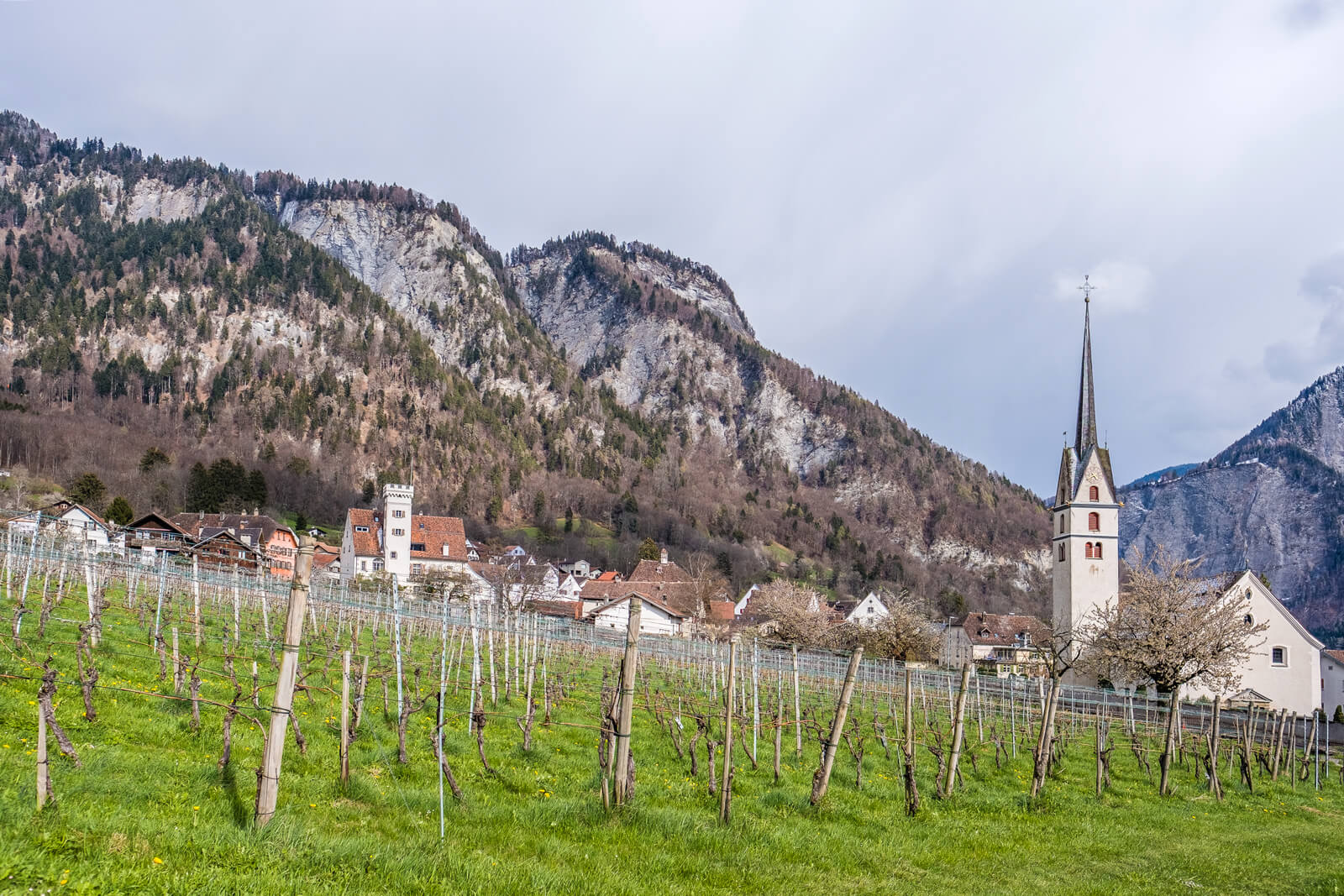
In the Middle Ages, Malans became a merchant village thanks to its strategic location. (The Rhine Valley was a vital connection from Germany to Italy.)
The importance of the village led to the influx of noble families from Graubünden who built their representative seats here: the Bothmar Castle and the Plantahaus are just two among many other examples you will notice on a walk through the village.
The Bothmar Castle’s garden, installed between 1740 and 1750, is still one of the most beautiful baroque gardens in Switzerland.
For an elevated perspective with views across the Rhine Valley, take the Älplibahn cable car. It is being kept alive by the members of a cooperative, taking you from 607 to 1801 meters above sea in 14 minutes. It operates every 15 minutes during summers.
Taste the local wine
Bündner Herrschaft is the warmest wine-growing region of German-speaking Switzerland. (The climate is favored by the warm Föhn winds.) Some 70 producers grow 42 different grape varieties, turning them into excellent wines. Tasting some of the Bündner Herrschaft vintages should not be missed...
We went to Scadenagut in Malans, right next to the Bothmar Castle. The first wines of the Scadenagut were produced in 1974 in the historical cellar of Bothmar Castle.
The new home for the Scadenagut was built in 2003/2004 according to the plans of the architects Konrad Erhard and Daniel Schwitter. The functional glass building is nestled next to the Scadena vineyard in harmony, providing stunning views from the terrasse.
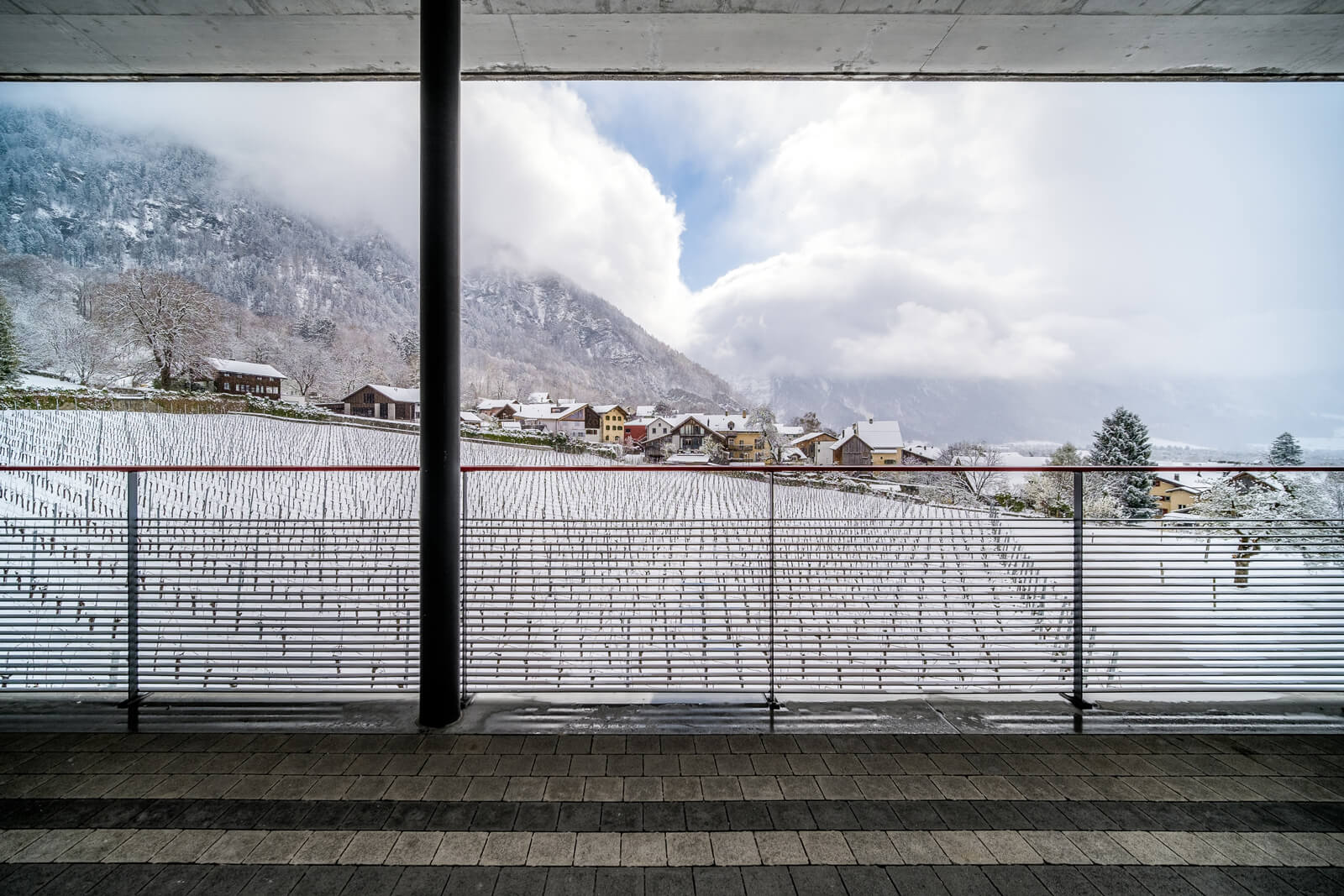
Our favorite white wine is the Grauburgunder, although it had some strong competition from the Chardonnay. And our favourite red is the Blauburgunder.
Stay overnight at the Plantahaus
The Plantahaus was built by Ambrosius von Planta in 1645. It was renovated between 1972 and 1974 by the Graubünden architect Rudolf Olgiati. As an art historian and architect, Olgiati was a representative of the New Objectivity movement. He was known for his cubical use of forms and had designed numerous houses in Flims where he died in 1995.
One of the apartments inside Plantahaus can now be rented through Ferien im Baudenkmal. It contains some original Olgiati furniture, such as the kitchen table.
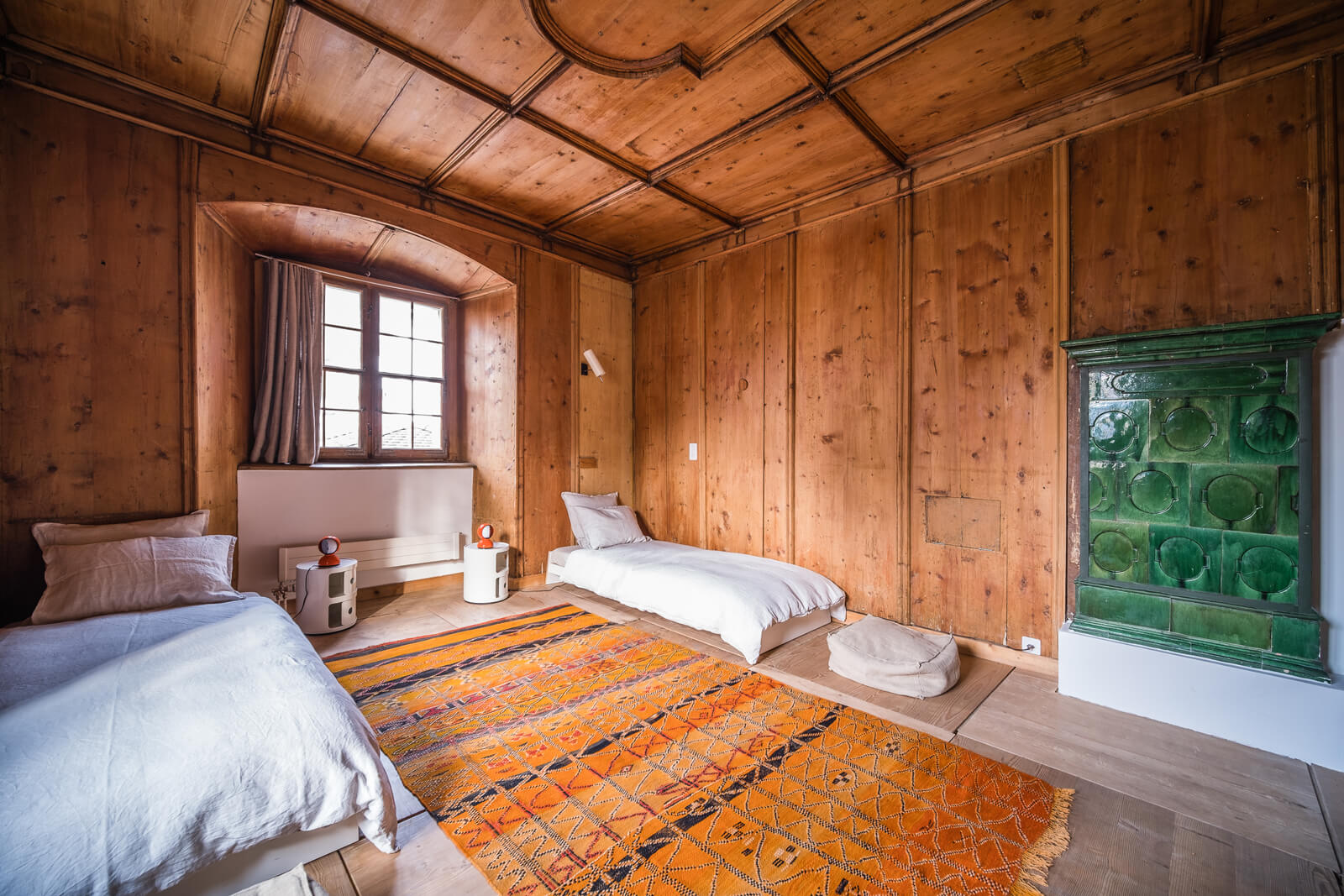
We loved the contrast between the traditional warm wood and Olgiati’s cubic style and the use of white walls. The apartment is enormous and even has two fireplaces!
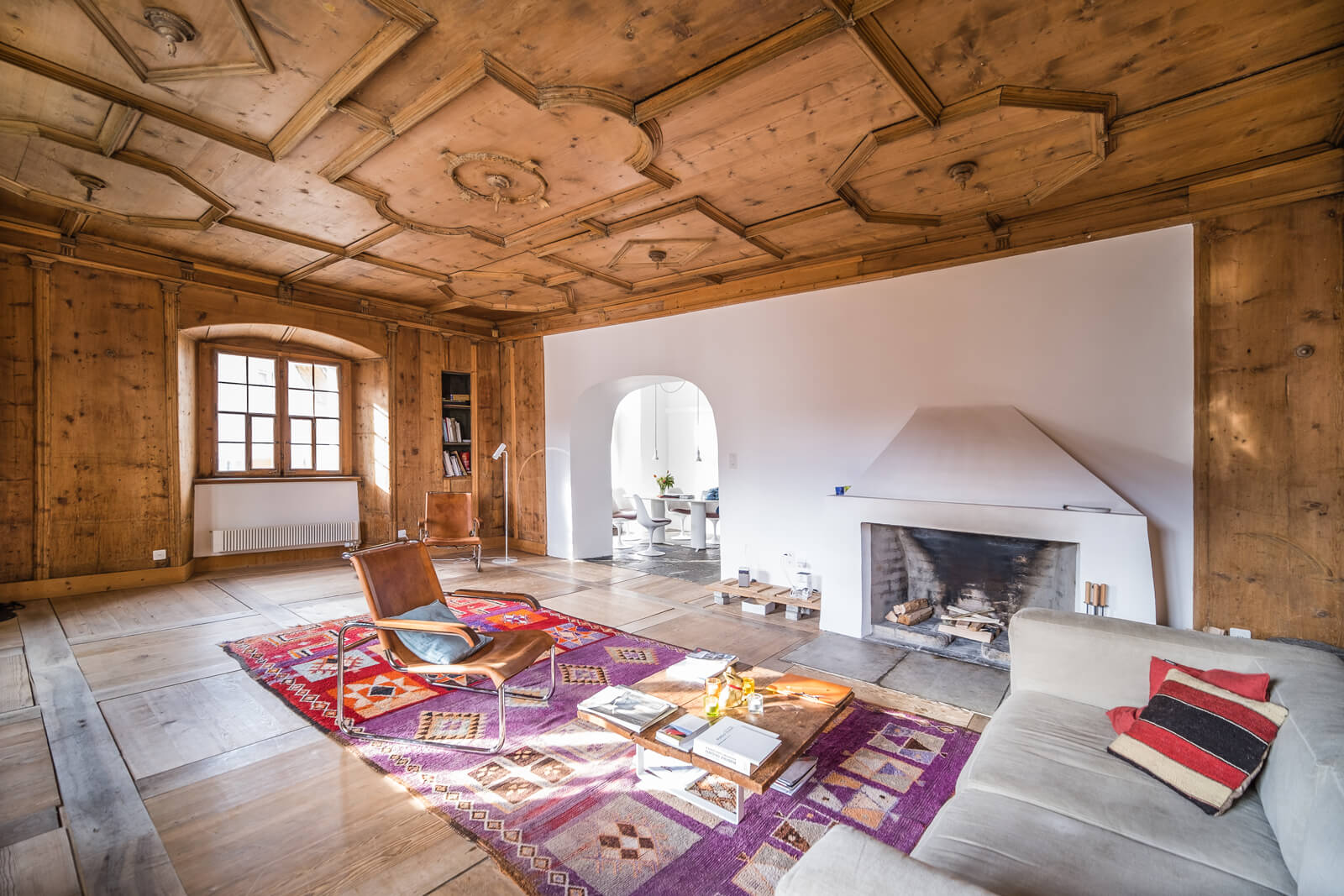
Landquart: Marvel at the architecture
Landquart has less than 10’000 residents but it is home to some very interesting 21st-century architecture. I have already introduced Rudolf Olgiati, so let’s start with a building by the architect’s son, Valerio Olgiati.
The Plantahof auditorium was completed in 2010, and its placement within the overall structure of the Plantahof agriculture school creates a new central square. With a distinctive mono-pitch roof, it looks like a rock in the flat surroundings of Landquart.
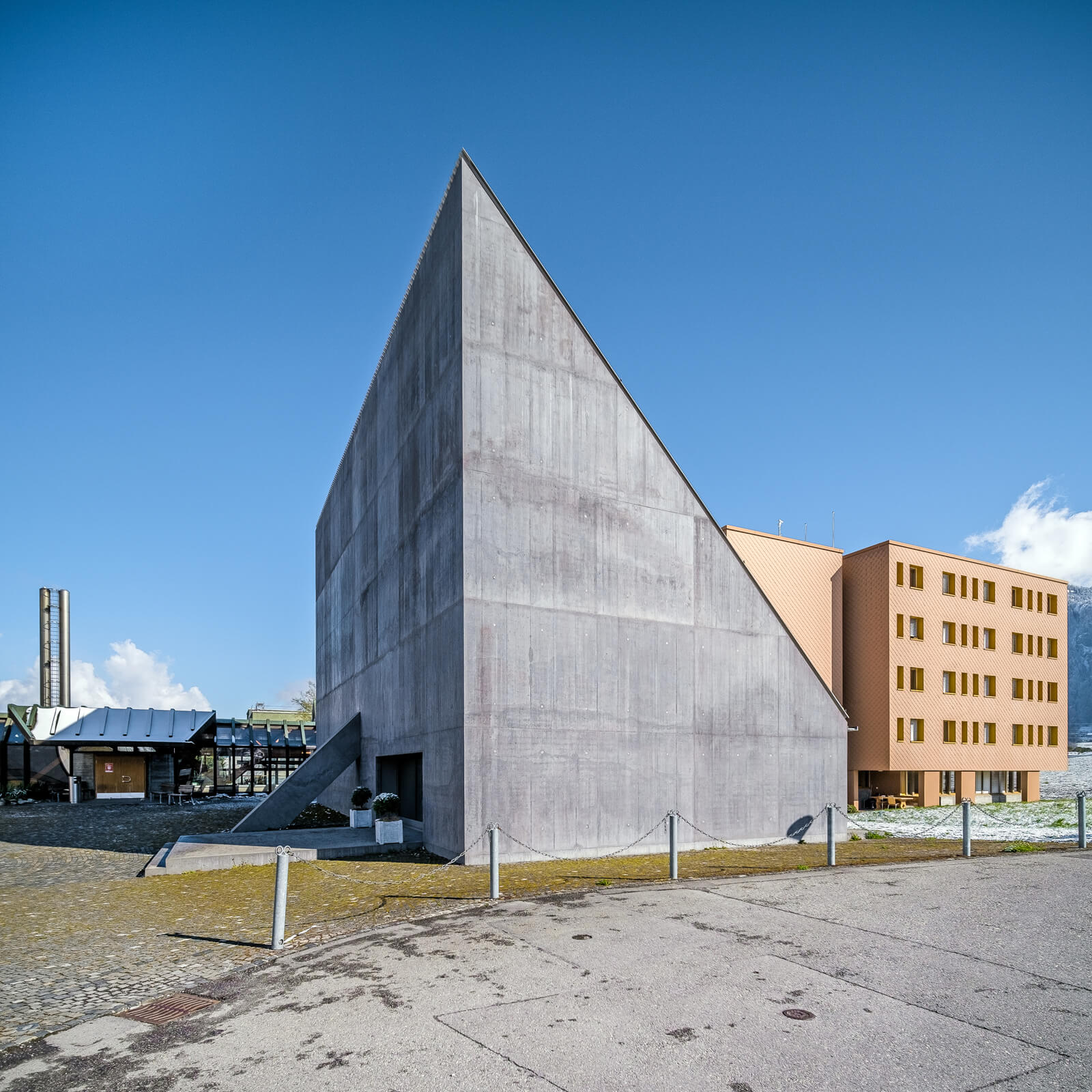
Bearth & Deplazes is an architecture firm based in Chur. Their most famous project is likely the new Monta Rosa Hut in Zermatt, but their two buildings in the center of Landquart are also worth looking at.
The ÖKK headquarters, an office building for an insurance company, were completed in 2012. The facade frame and interior walls are in exposed concrete, containing huge arched openings.
Just next to it, separated through a shared courtyard, is the eight-story apartment house Arcadas. The condominiums have loggias on both sides with arched openings that frame the views of the city, and of the Bündner Herrschaft.
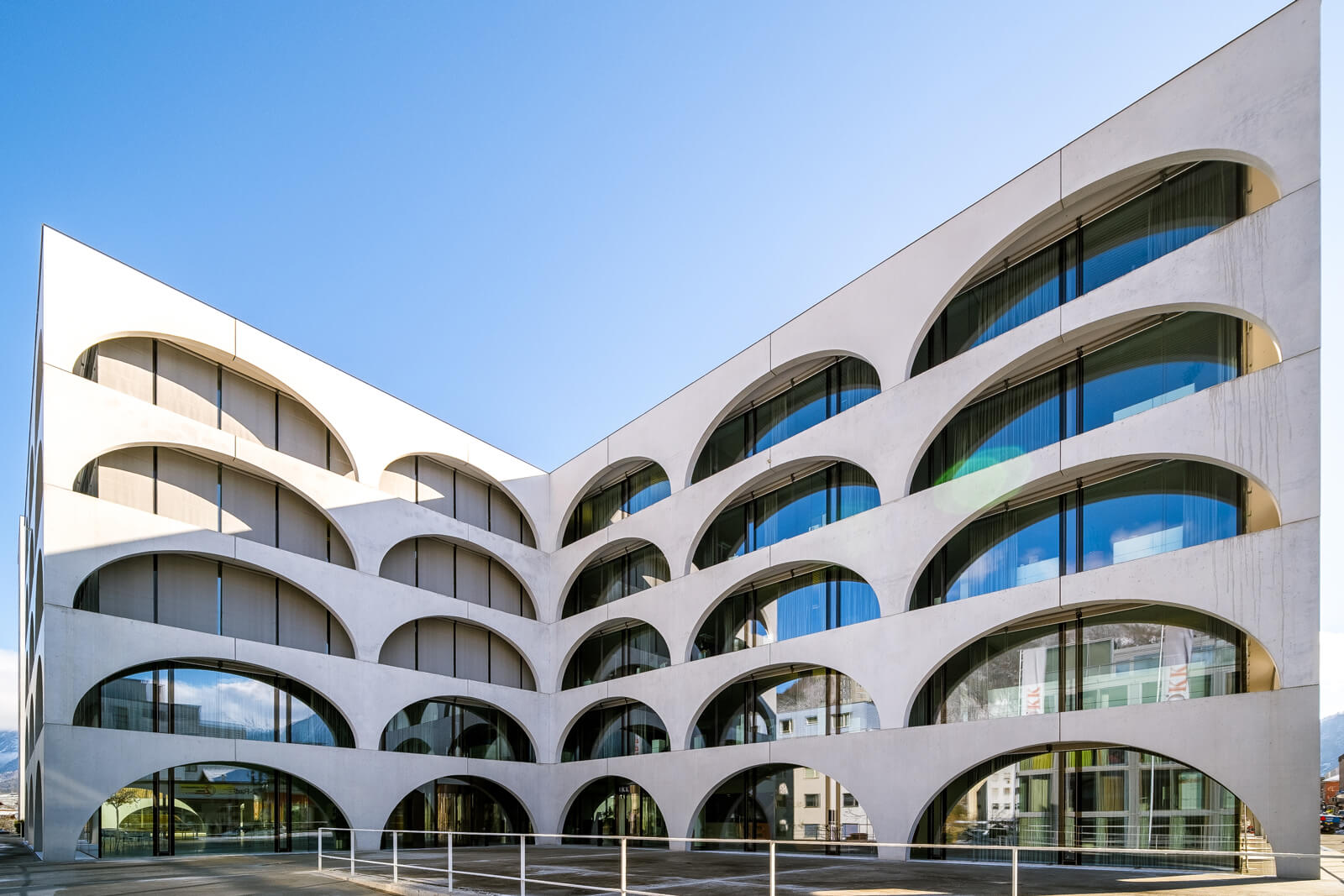
Berschis: Visit the Chapel of St. George
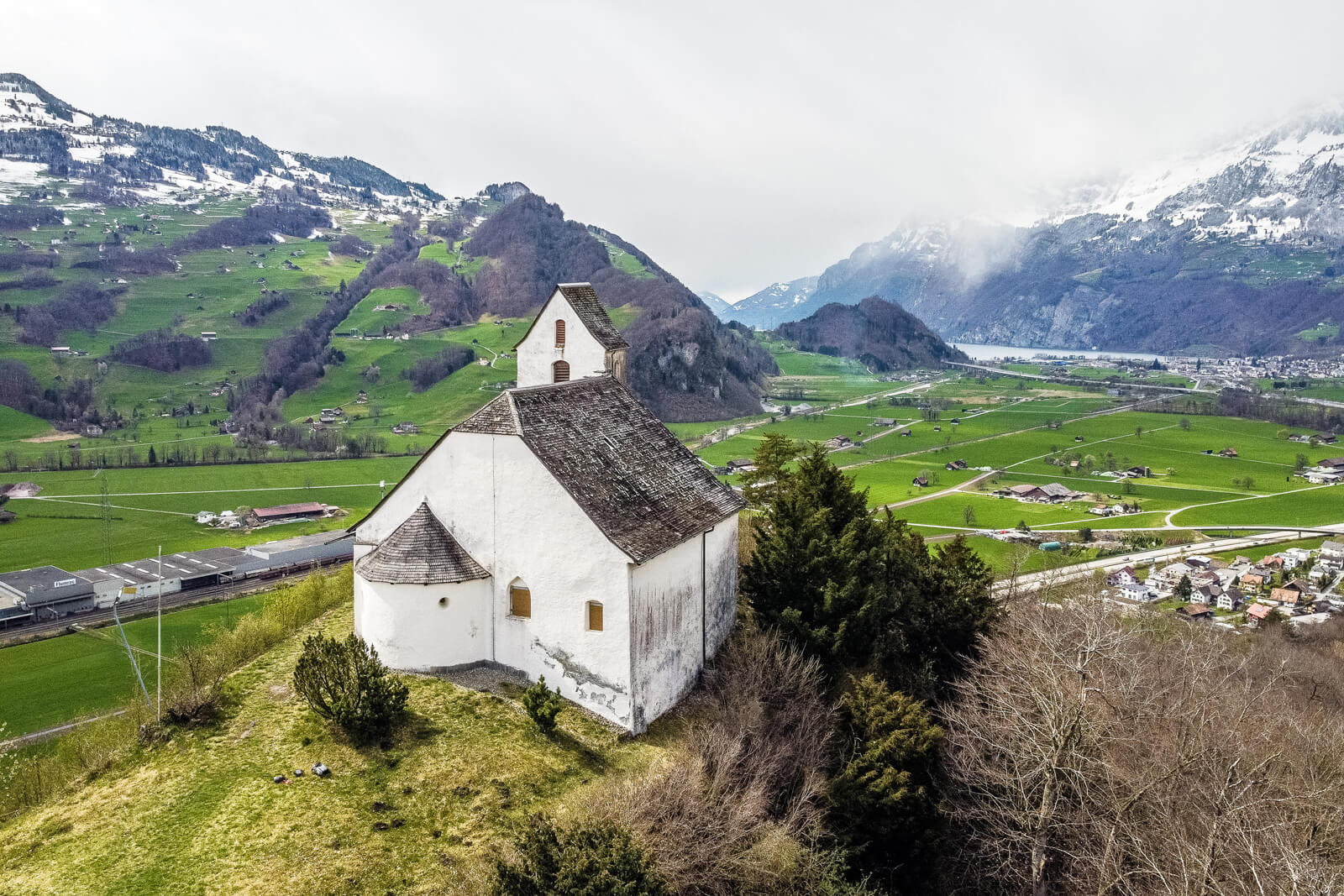
The Chapel of St. George is considered the oldest Romanesque chapel in Eastern Switzerland. It sits on a rocky hill, about a 30-minute walk from the village of Berschis. (You cannot miss it when arriving in the Bünder Herrschaft from Zurich.)
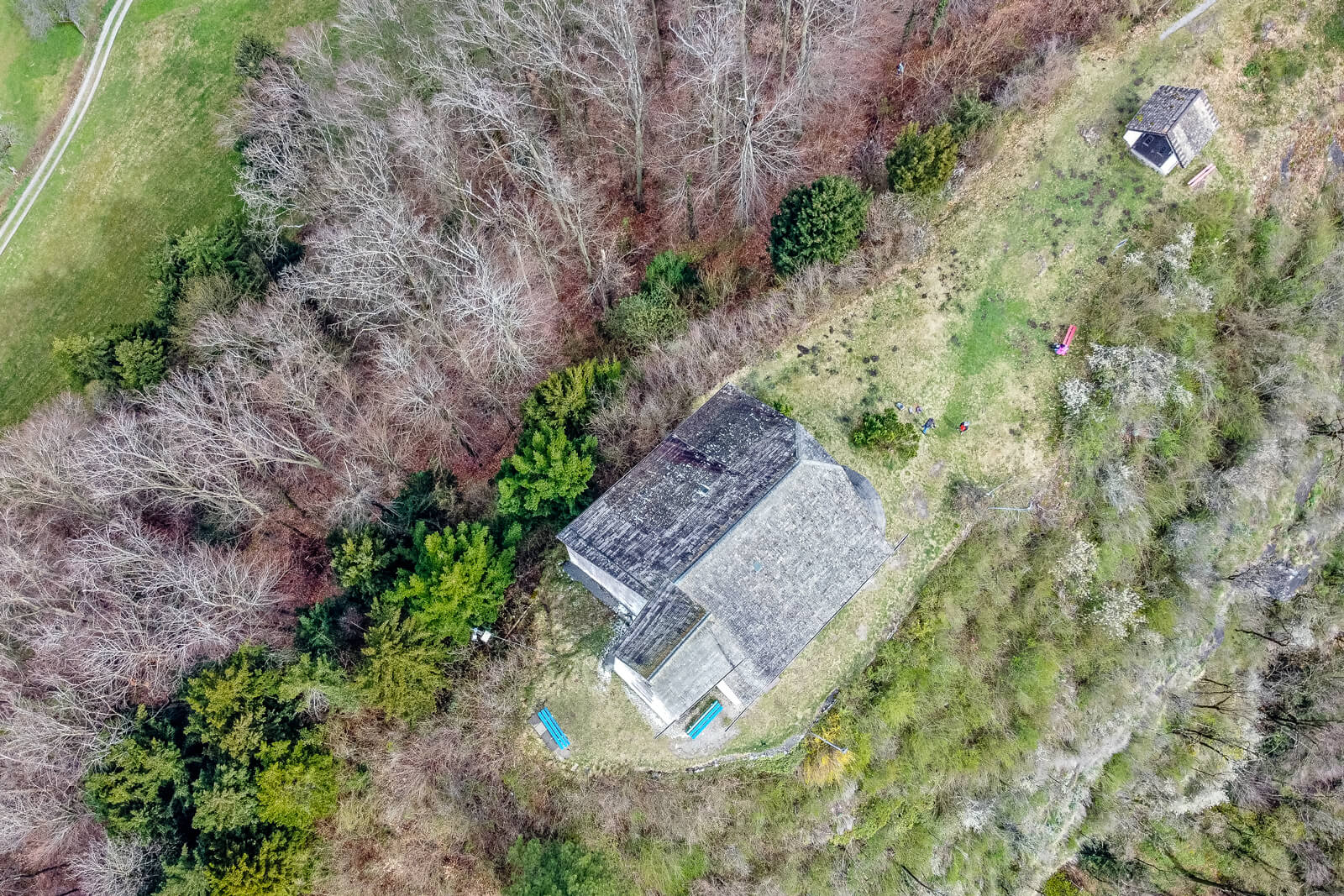
Along the way, you will pass by the Lourdes grotto. Blasted out of the rock by a local miner in 1921, it was the Berschis municipality’s way of saying thanks for being spared from a cattle epidemic.
Chur: Experience the Heiligkreuzkirche
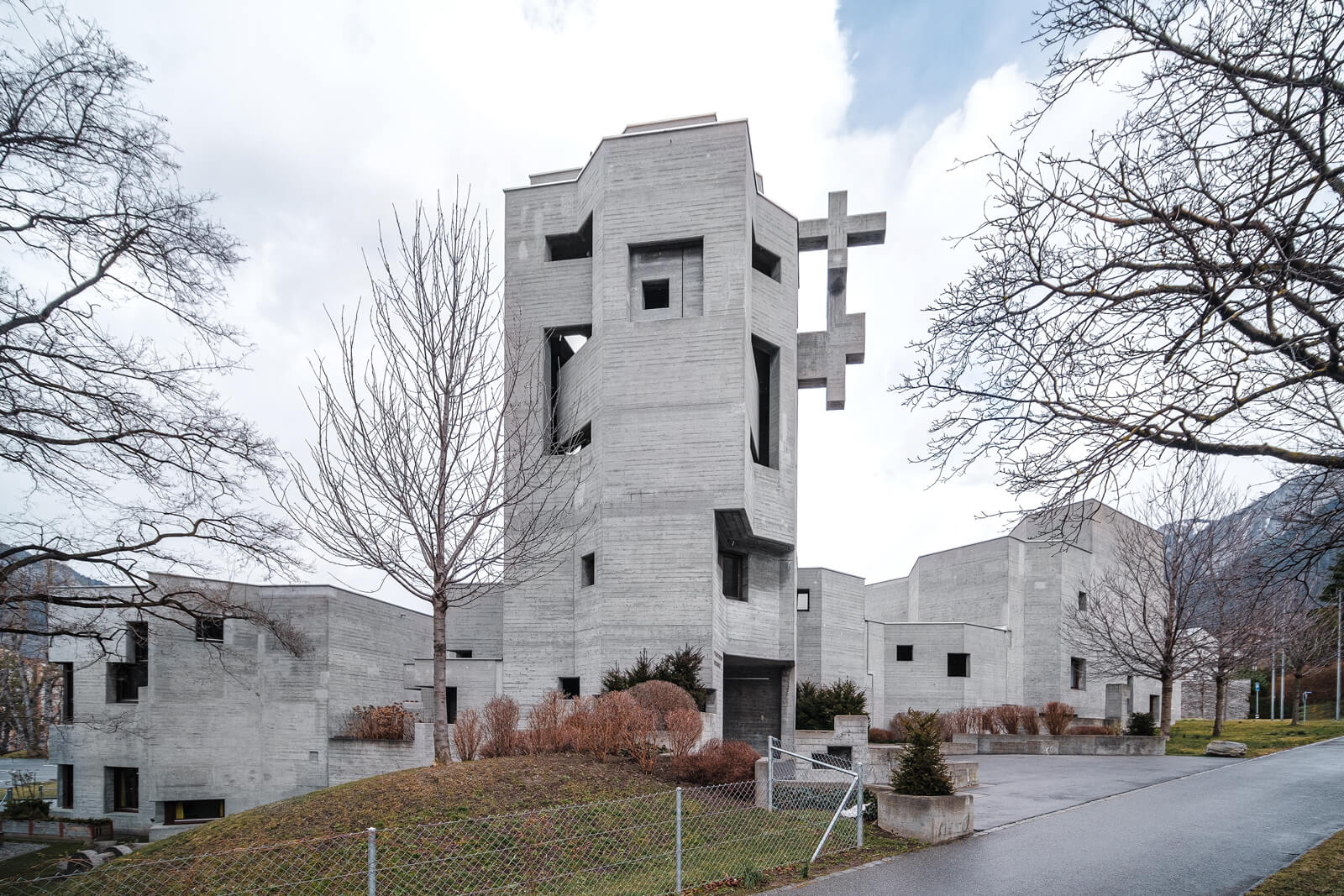
Built between 1967 and 1969 by Basel born architect Walter M. Förderer, the church and parish center are among the most important exposed concrete religious buildings in Switzerland.
"During the first inspection of the building site," the architect recalled, "I was overcome by the idea that the new church should look like a mass of rock broken down from the nearby high mountain wall and piled up here."
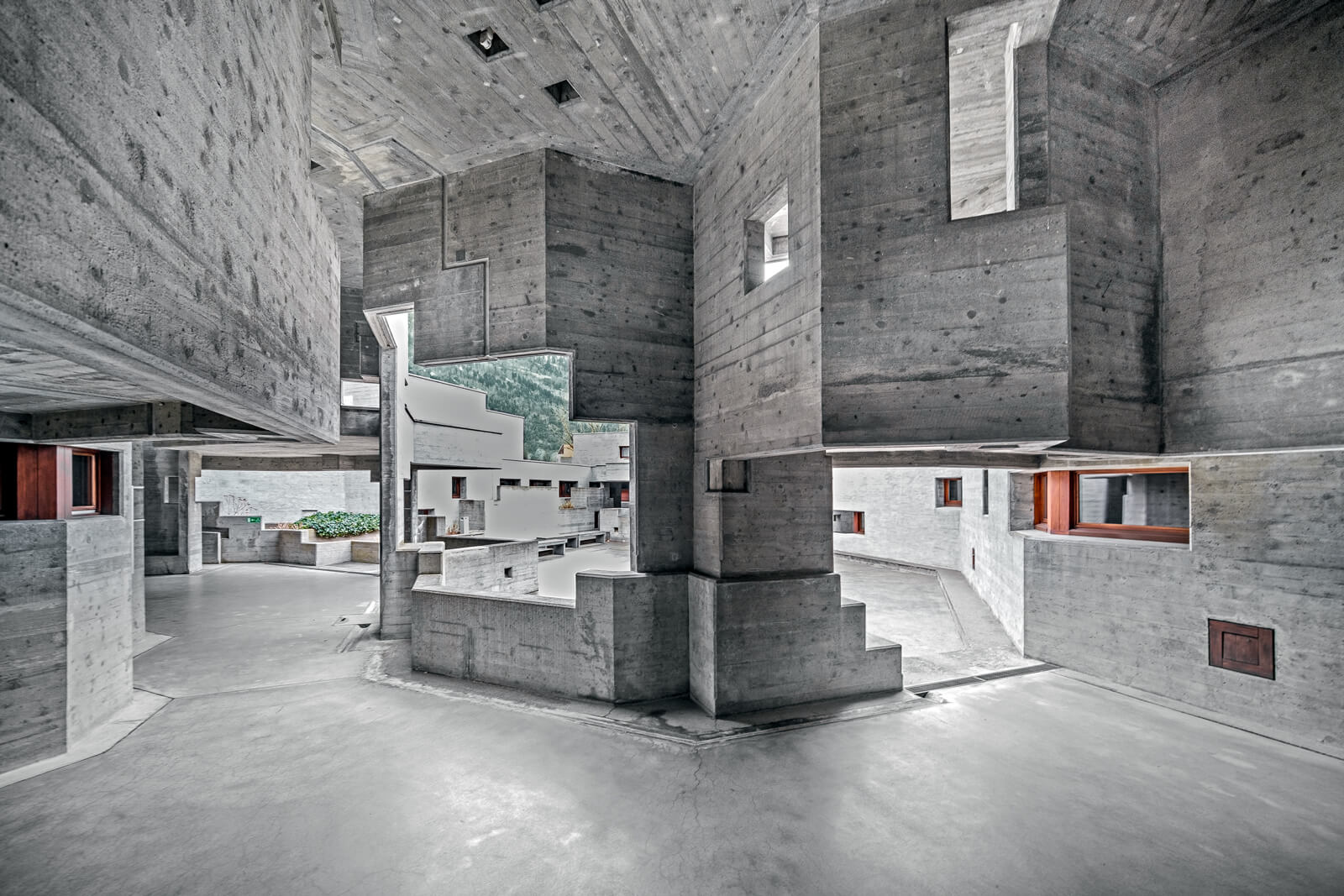
Walter Maria Förderer found his way to architecture through sculpture. Between 1967 and 1971, he built a total of seven churches in Switzerland. They are all monumental buildings at the intersection of architecture and sculpture.
Chur: Find inspiration at the Bündner Kunstmuseum
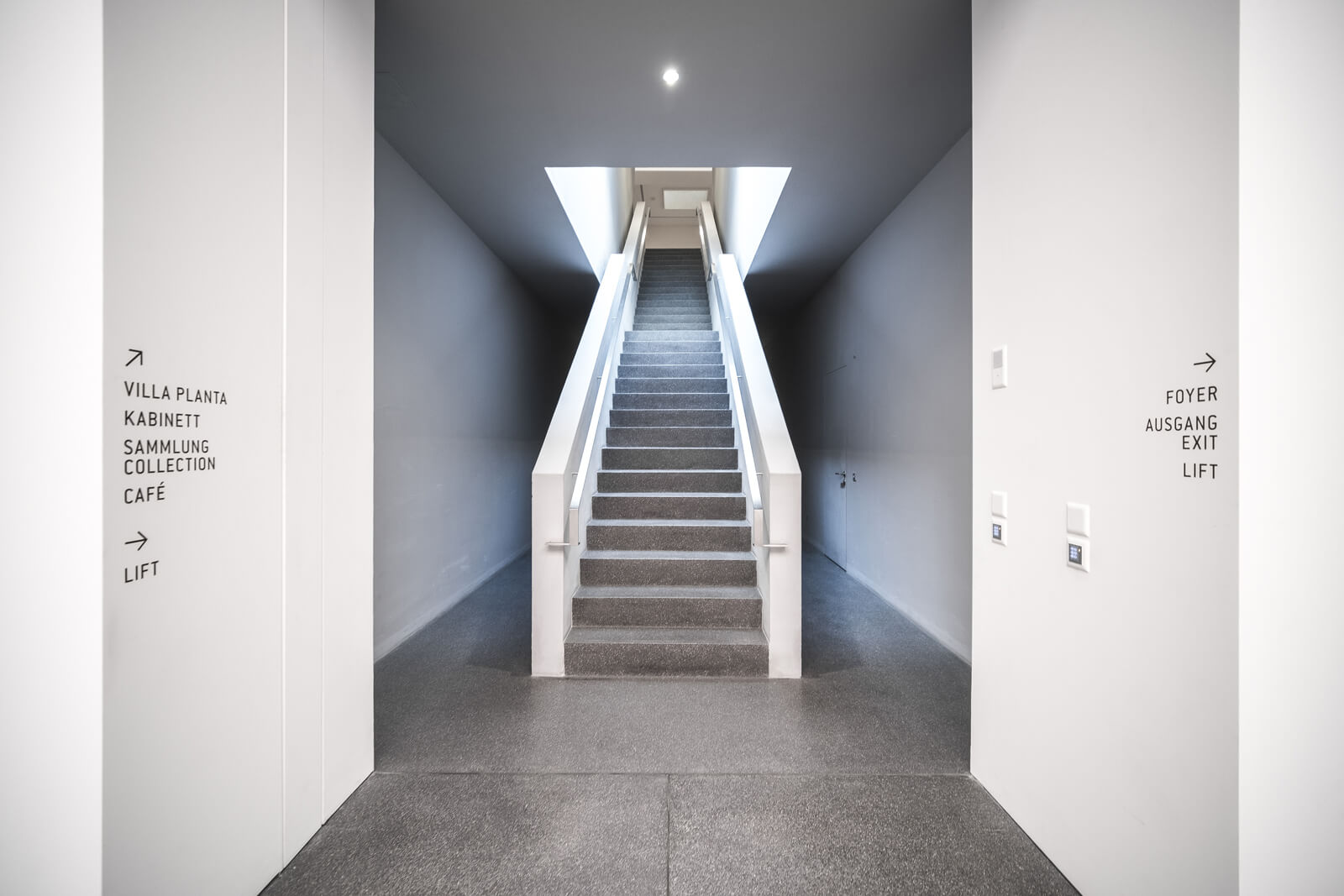
The Bündner Kunstmuseum was founded around 1900. It has a collection of some 8000 works of art ranging from the 18th century to the present. Among the highlights are works by the local artist Angelika Kauffmann, one of the first female artists to win recognition by the Royal Academy in London.
Also, works by the artist family Giacometti, with pieces by sculptor Alberto and the two painters Giovanni and Augusto.
Part of the museum is located in the historic Villa Planta. It was built in 1874 and 1875 for Jacques Ambrosius von Planta, based on blueprints by Johannes Ludwig. The new extension of the Bündner Kunstmuseum in Chur was designed by Barozzi/Veiga and completed in 2016. A visit is truly a feast for the eyes - for both art and architecture lovers!
Chur: Access the shelter over the Roman archaeological site
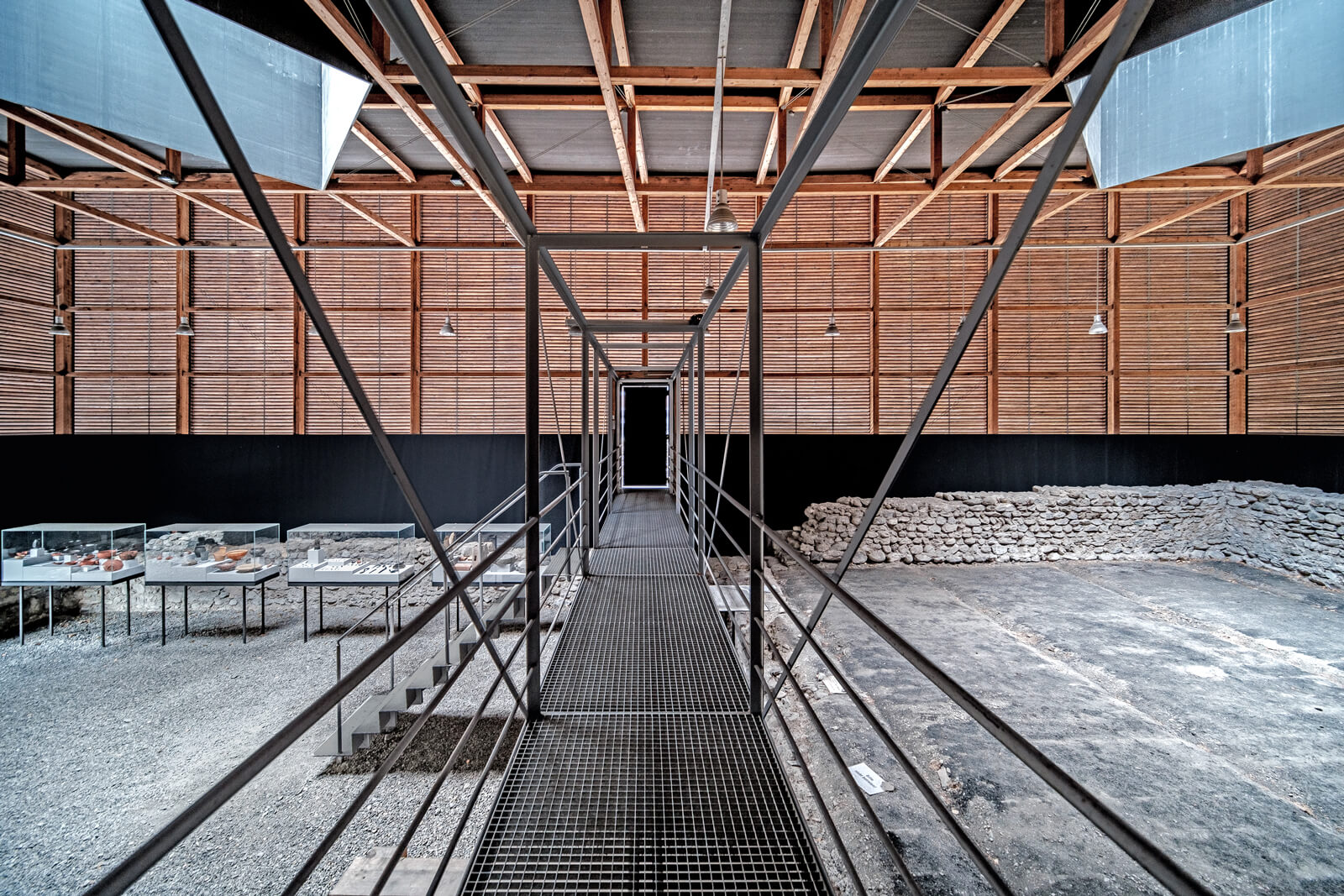
The shelter covering the Roman archaeological site in Chur was one of Peter Zumthor’s first projects to receive major recognition in 1986. It is built almost exclusively from timber lamella that allows both light and ventilation into the museum space.
It is a special experience to visit this space as you need to collect the access key at the tourist office. This allows you to see the site on your own and without any other visitors.
Chur: Have a walk in the Sculpture Park of Forum Würth
The headquarters of the international Würth Group was designed by Dieter Jüngling and Andreas Hagmann and was completed in 2002. It uses regularly spaced glass panels above the three upper floors in order to filter the sunlight. In 2007, a publicly accessible sculpture park was inaugurated right next to the building with works by Not Vital, Jean Tinguely, and Niki de Saint Phalle:
Bad Ragaz: Treat yourself to a grand finale
Almost eight centuries ago, 36.5-degree Celsius warm thermal water was discovered in the Tamina Gorge. In 1840 the warm thermal water was first channeled to the town of Ragaz inside wooden pipes.
This was the beginning of the now-famous health resort of Ragaz. Since 1936, it has permission to use the name Bad Ragaz.
The Tamina Therme, whose new building was designed by Smolenicky & Partner and completed in 2009, is located in an extensive park landscape. It is made of white wood, with substantial oval windows that act as oversized picture frames.
For the eighth time, Bad Ragaz will be hosting the Swiss Triennial Festival of Sculpture, called Bad RagARTz. With about 400 sculptures spread out throughout the town, this outdoor show is one of the largest of its kind in Europe. There isn’t even an entrance fee!
How about a sneak peek of 2021 Bad RagARTz installations? Here are “Circle of life” by Stück und Gut, and a sculpture by Jürgen Knubben:
With Graubünden being the largest of the Swiss Cantons, there is plenty to discover. Bünder Herrschaft was the first of our three stops on this trip… stay tuned for more!

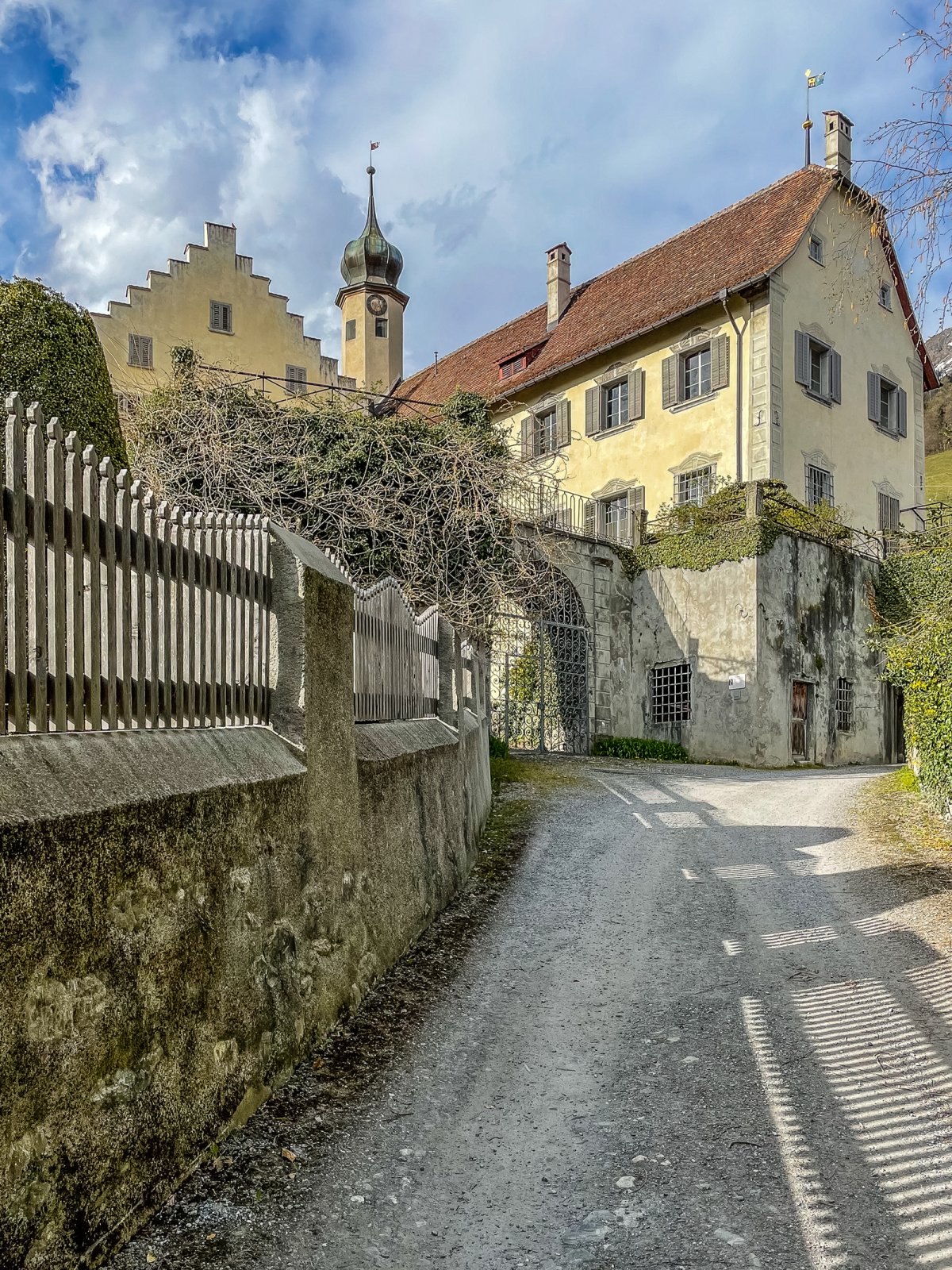
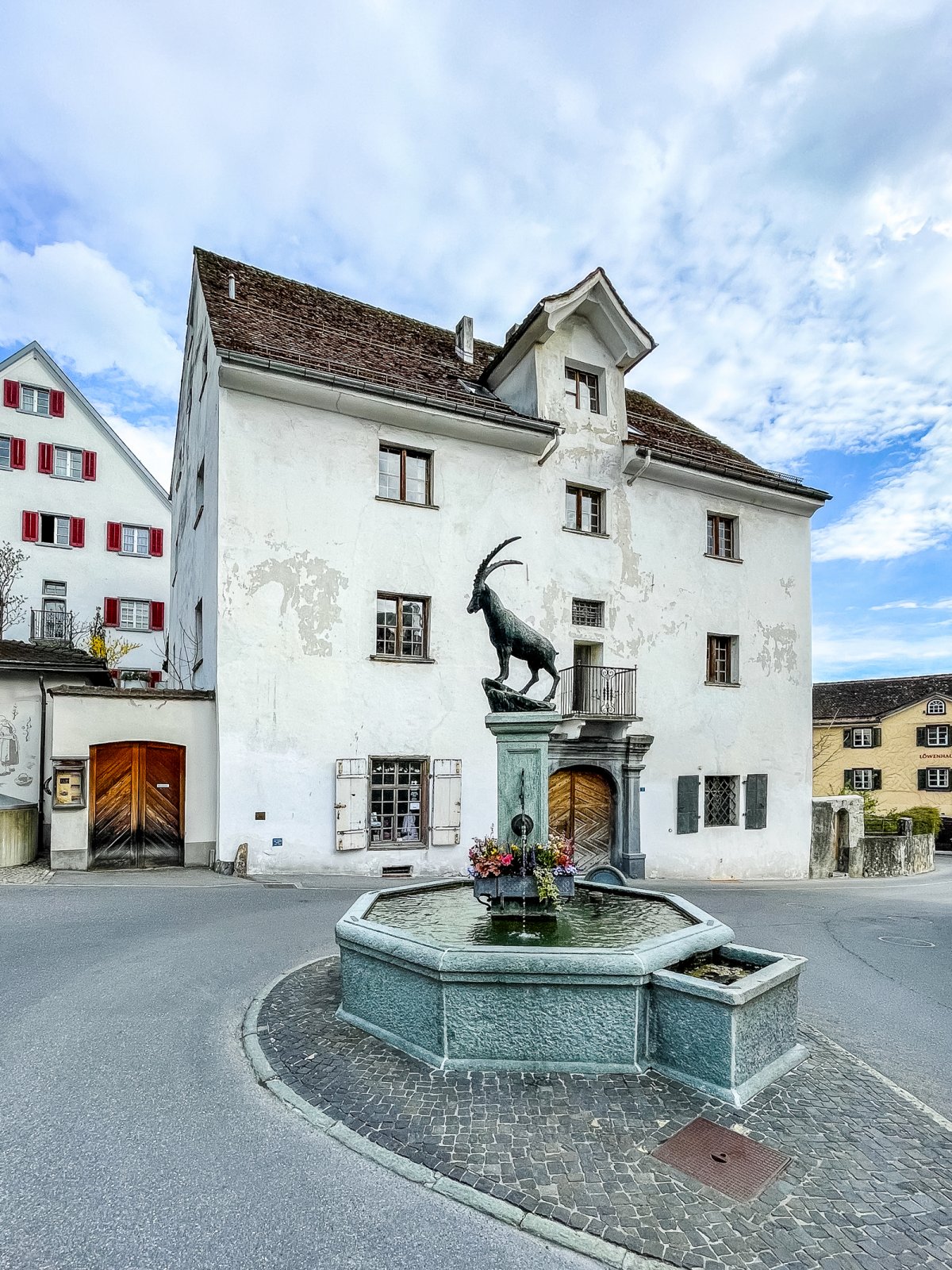
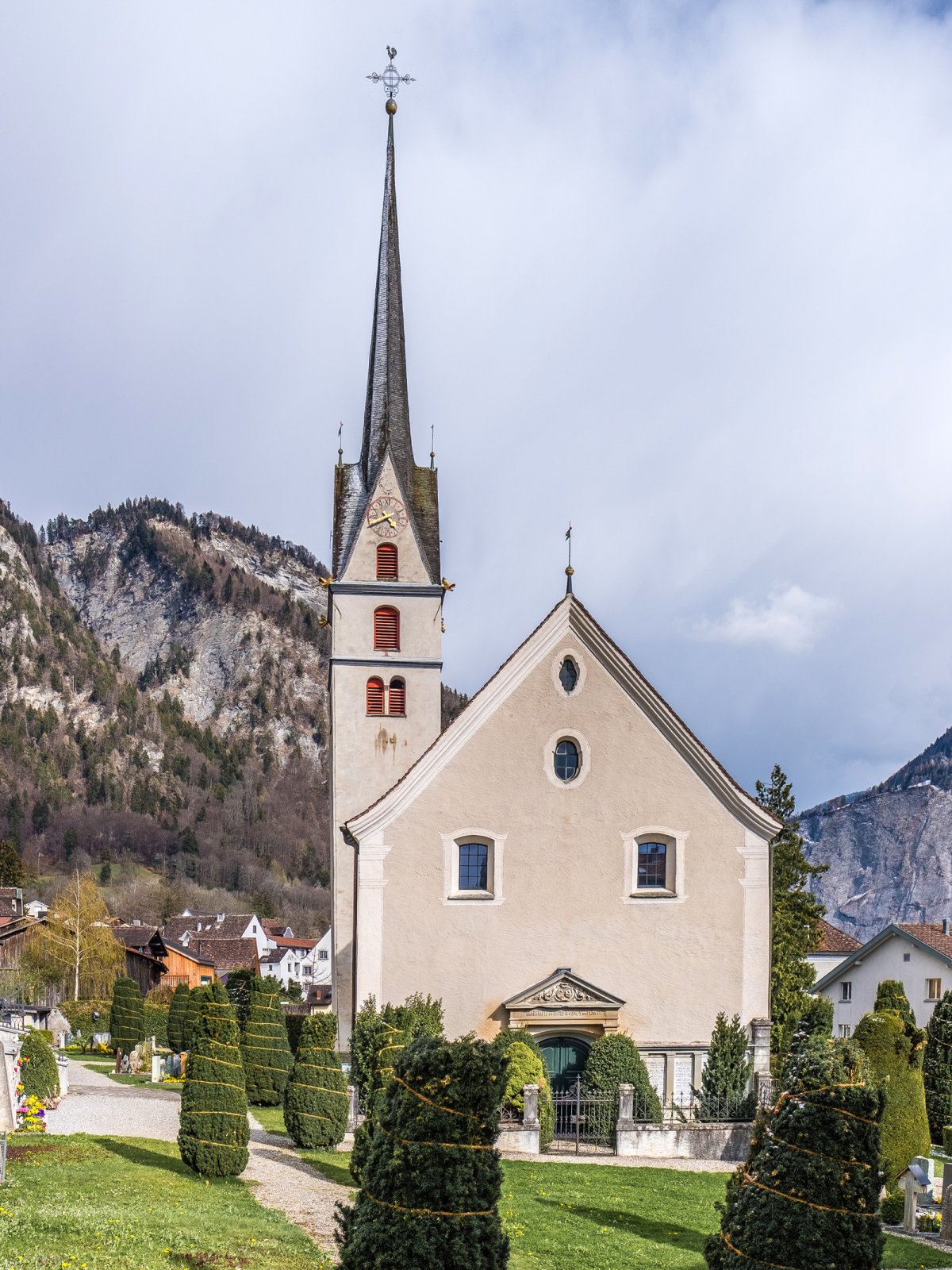
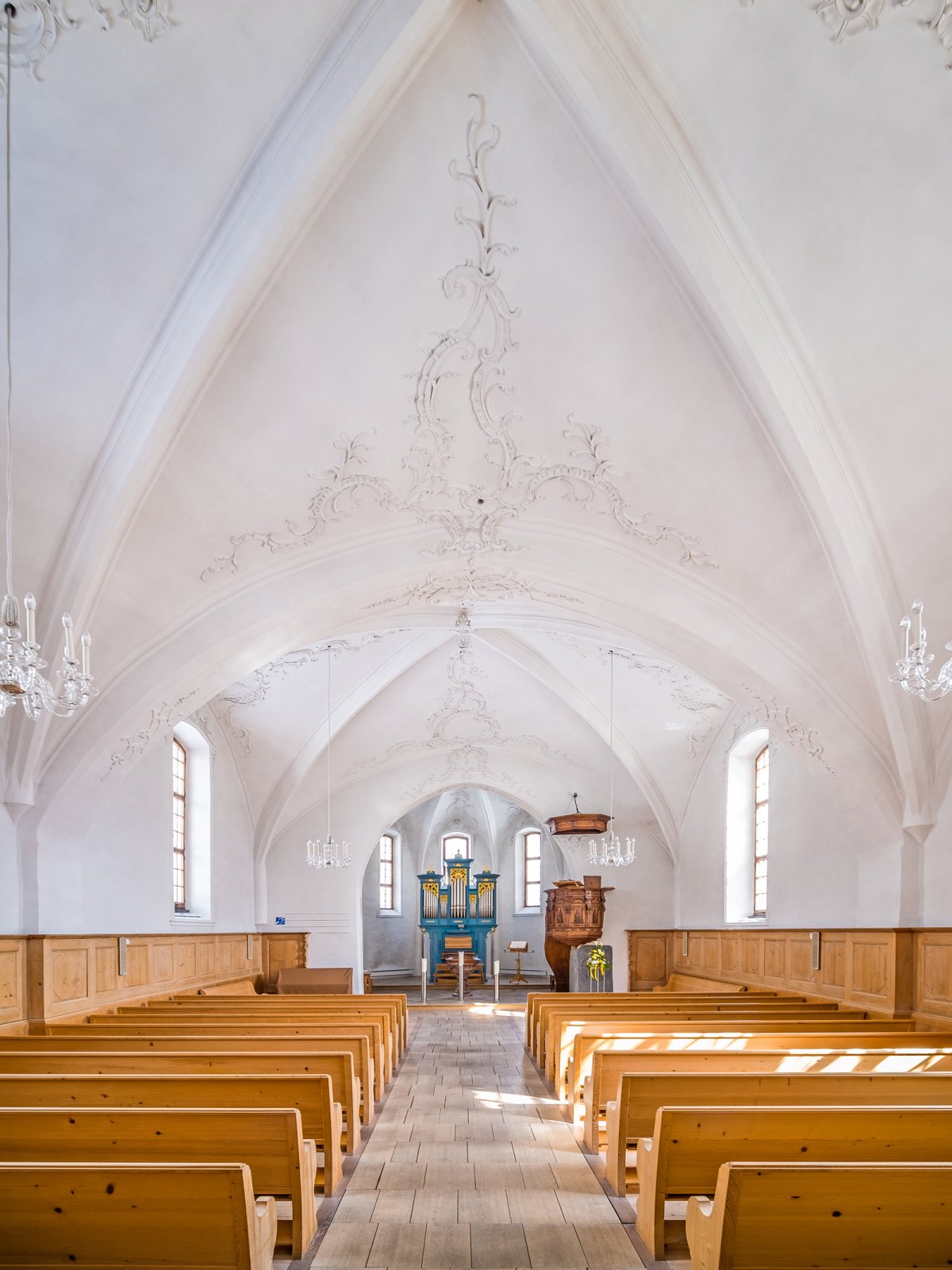
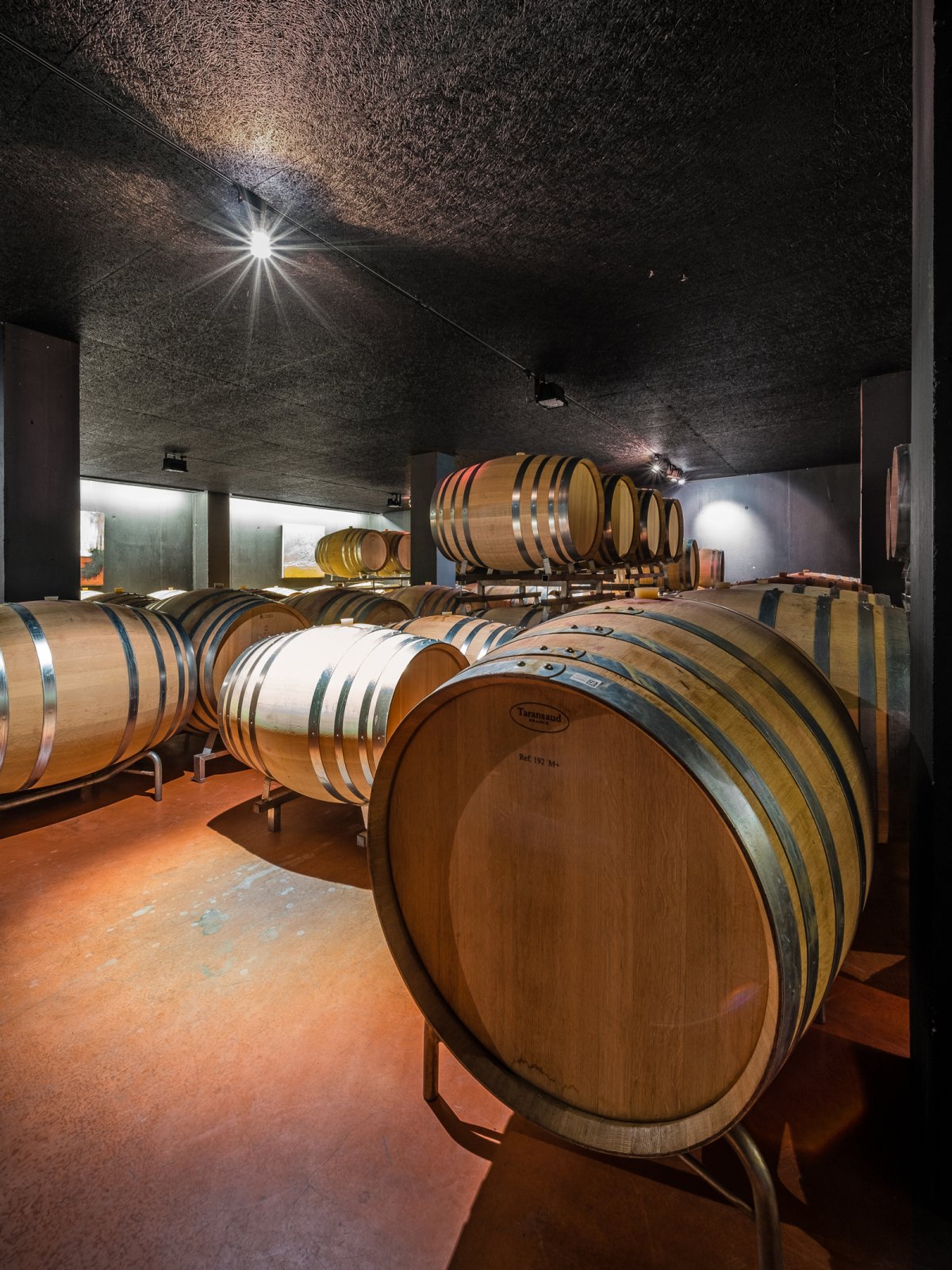

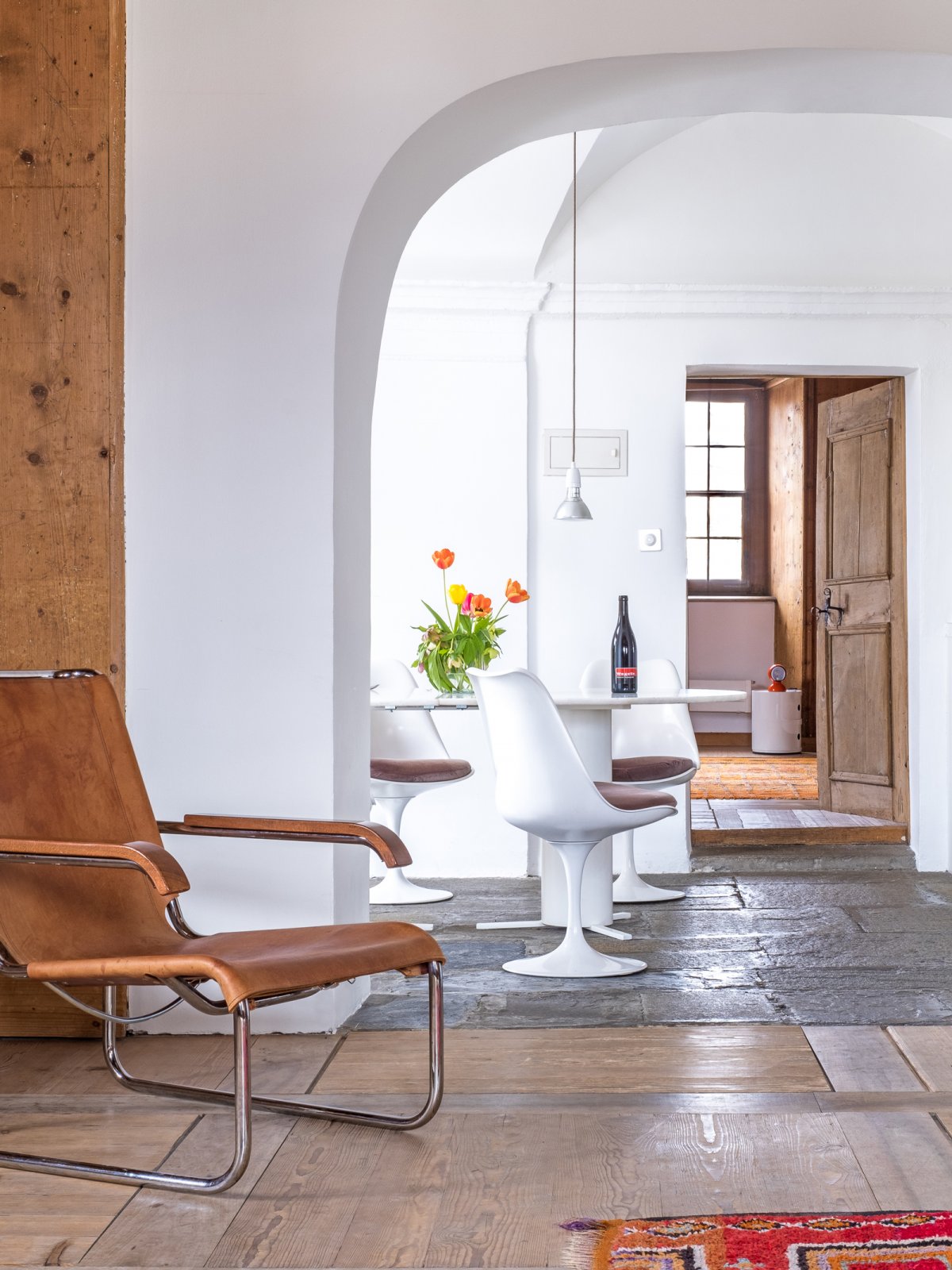
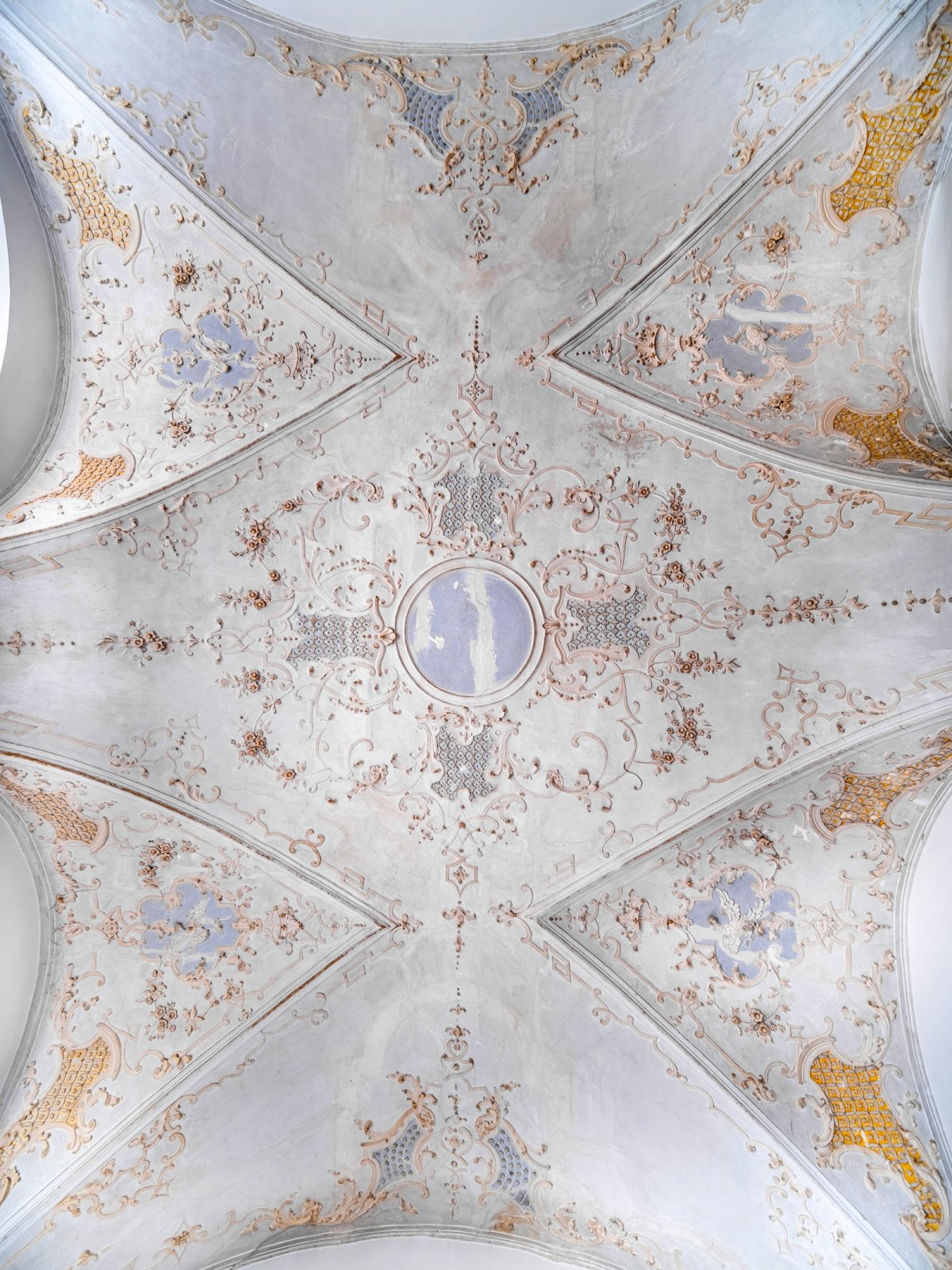
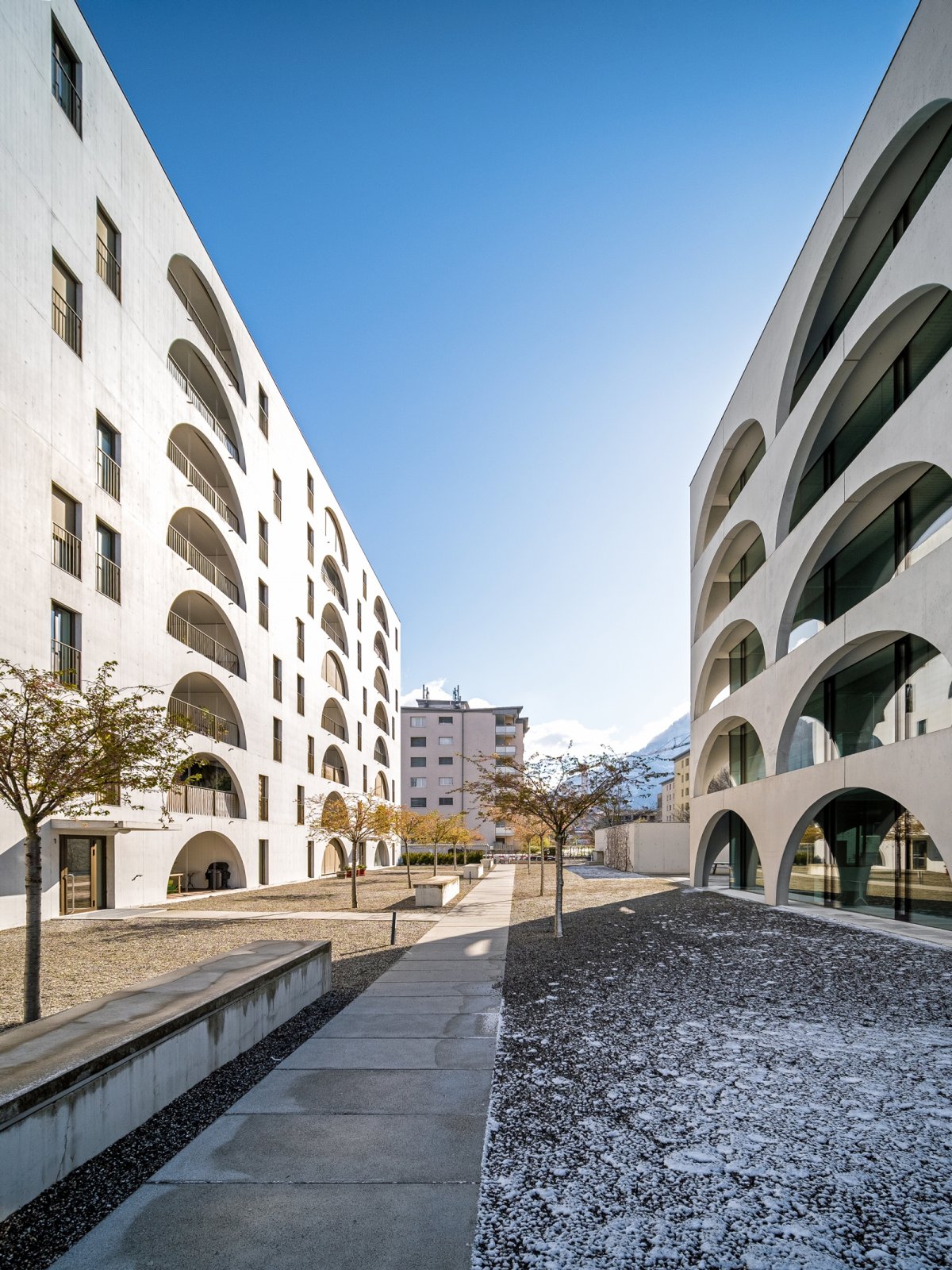
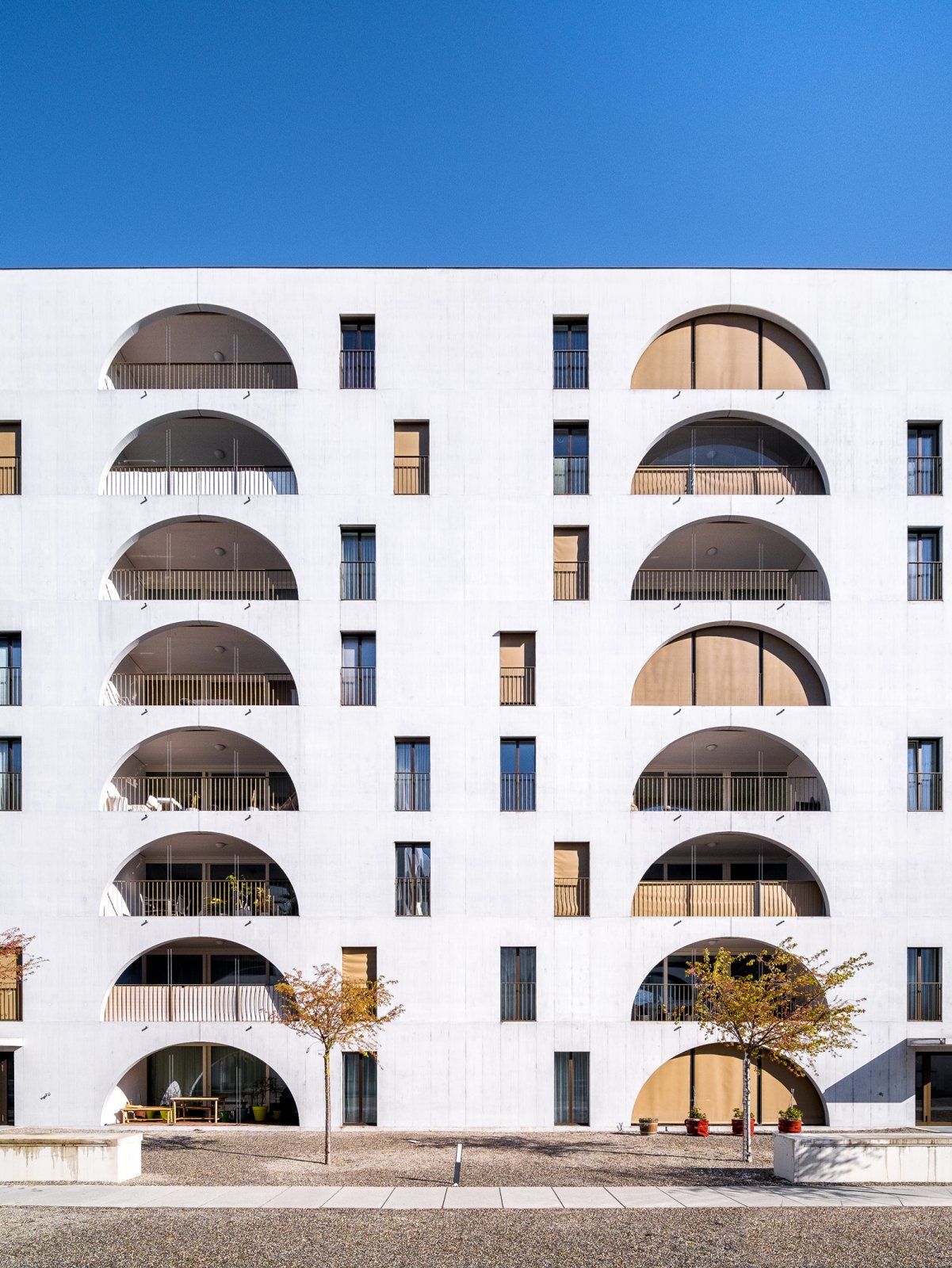
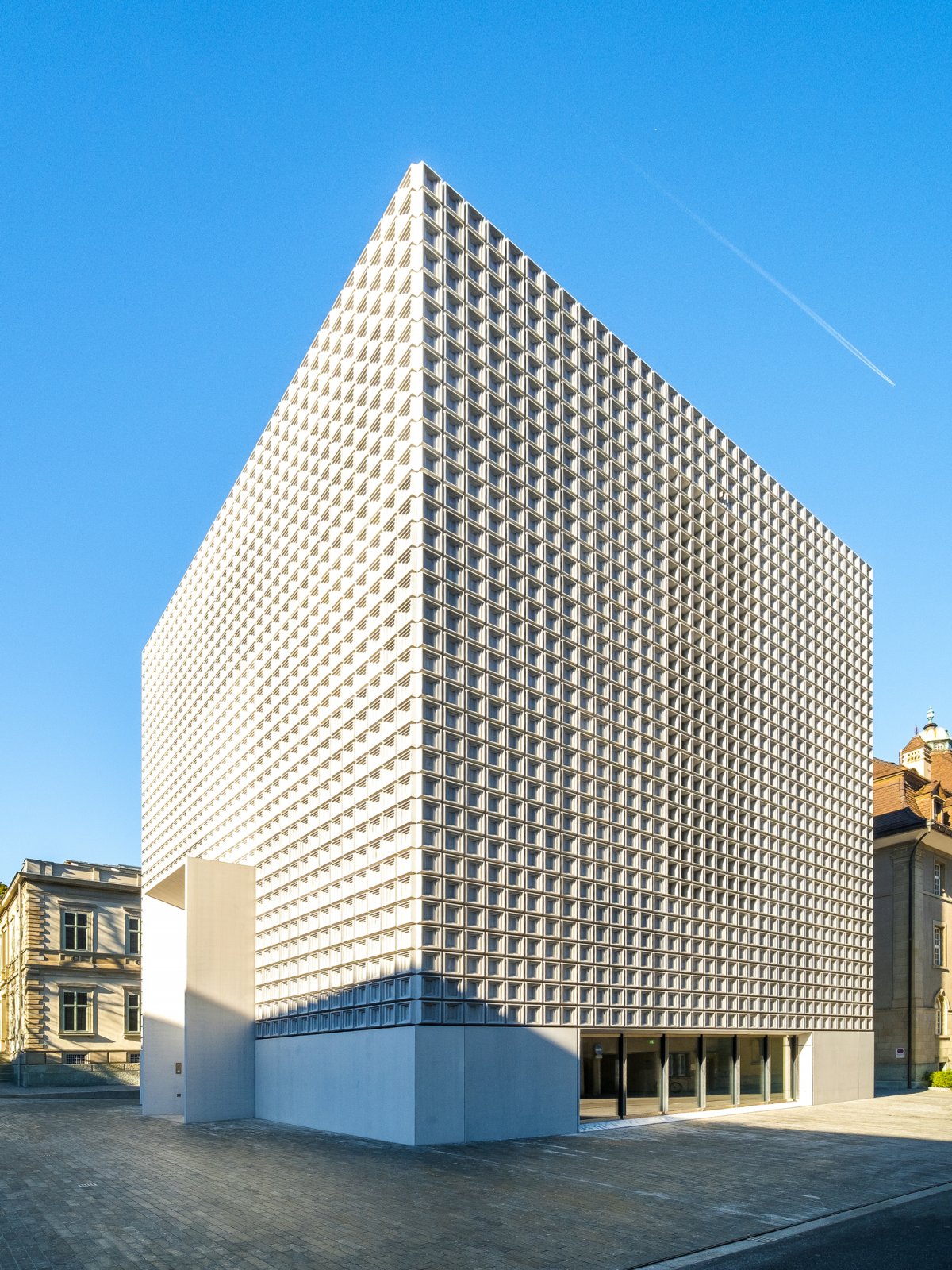
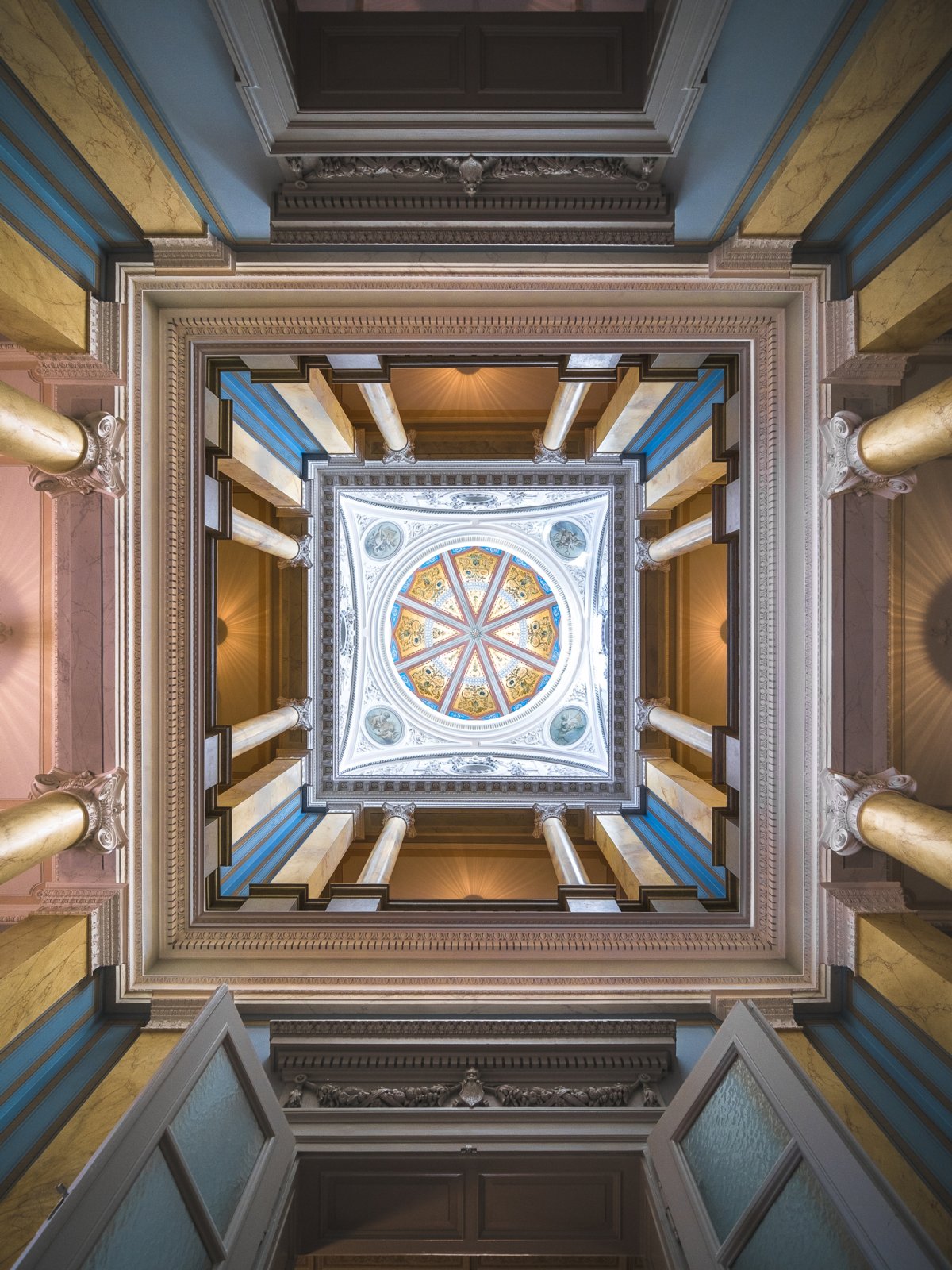
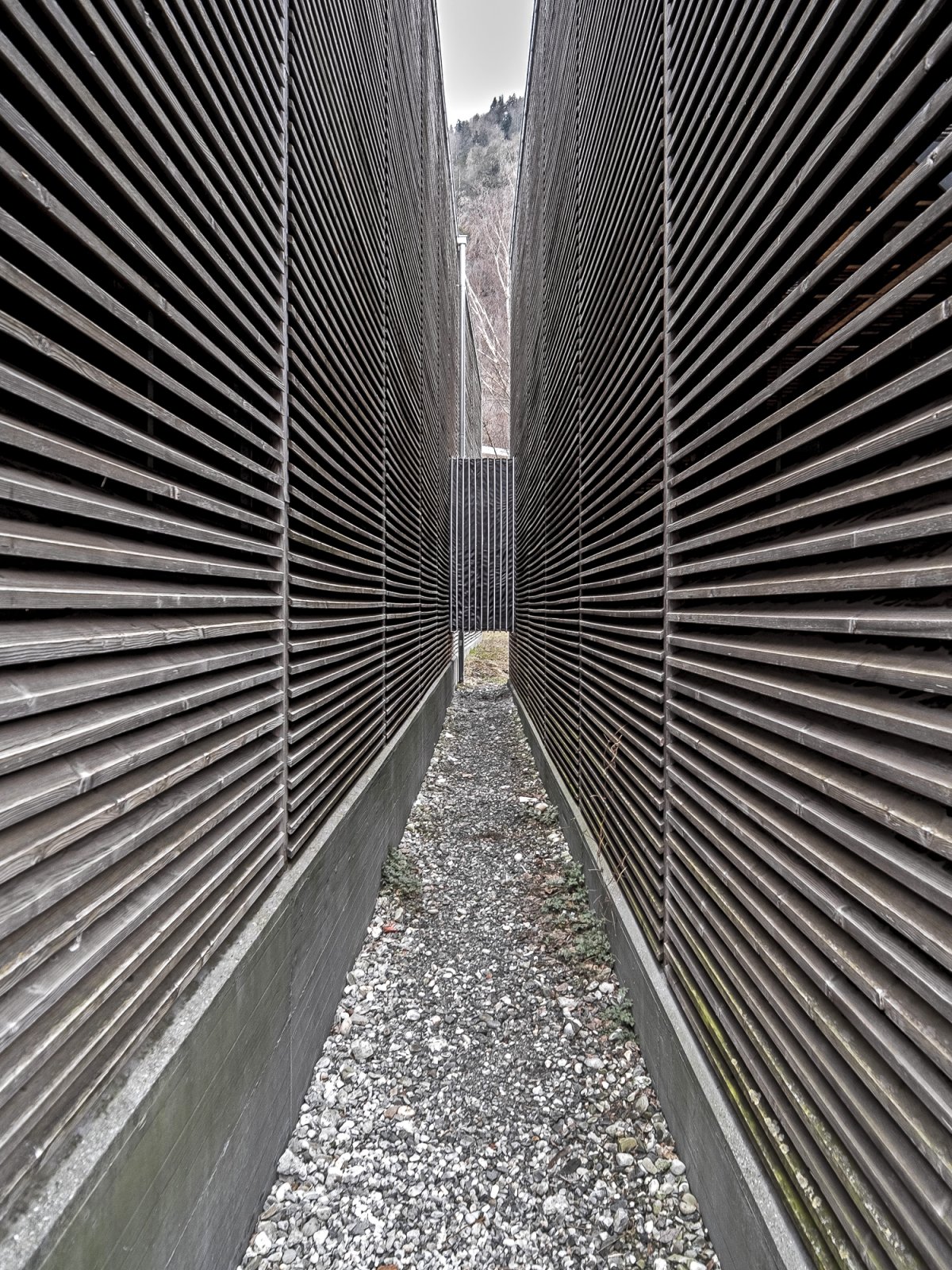
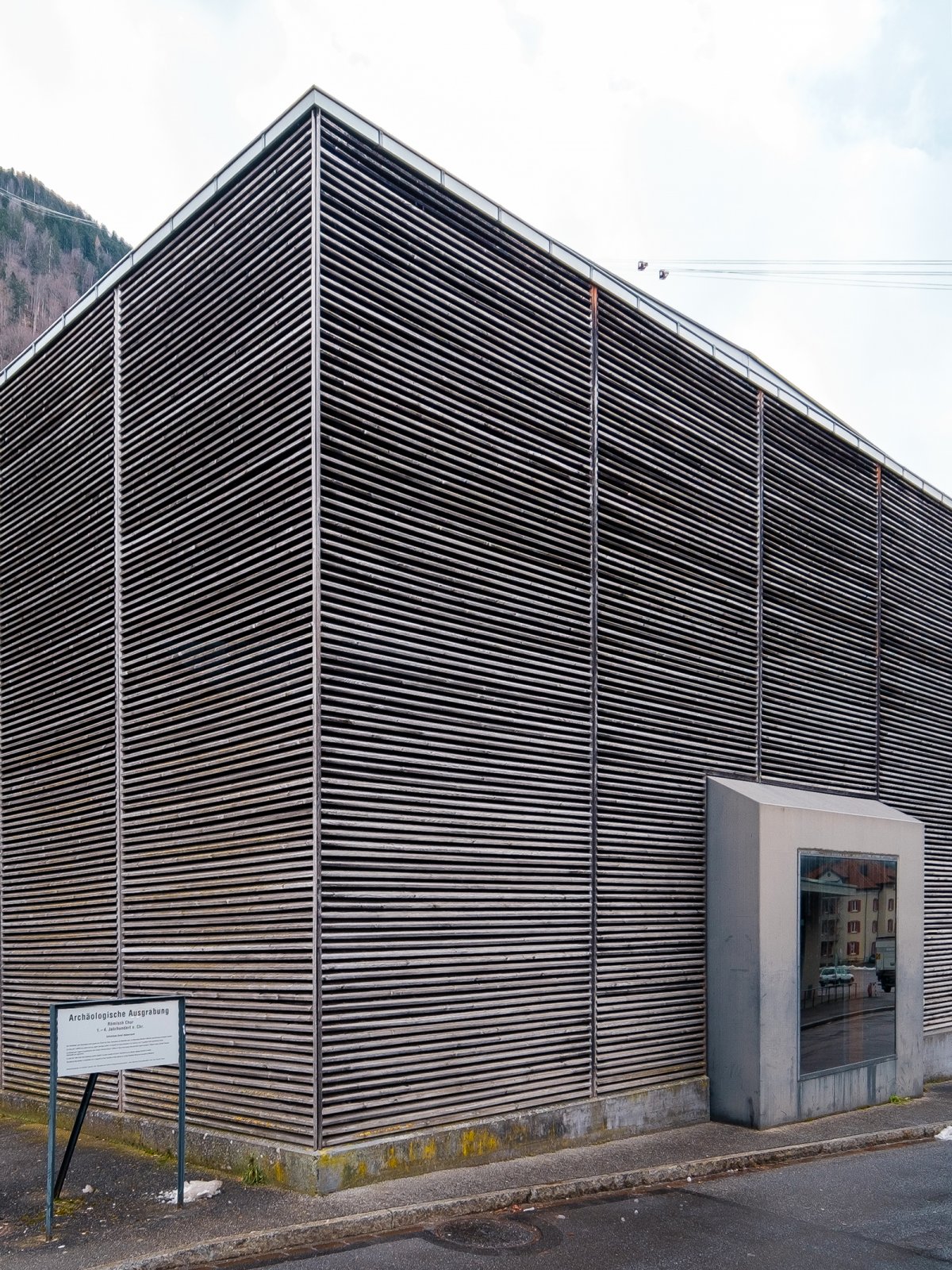
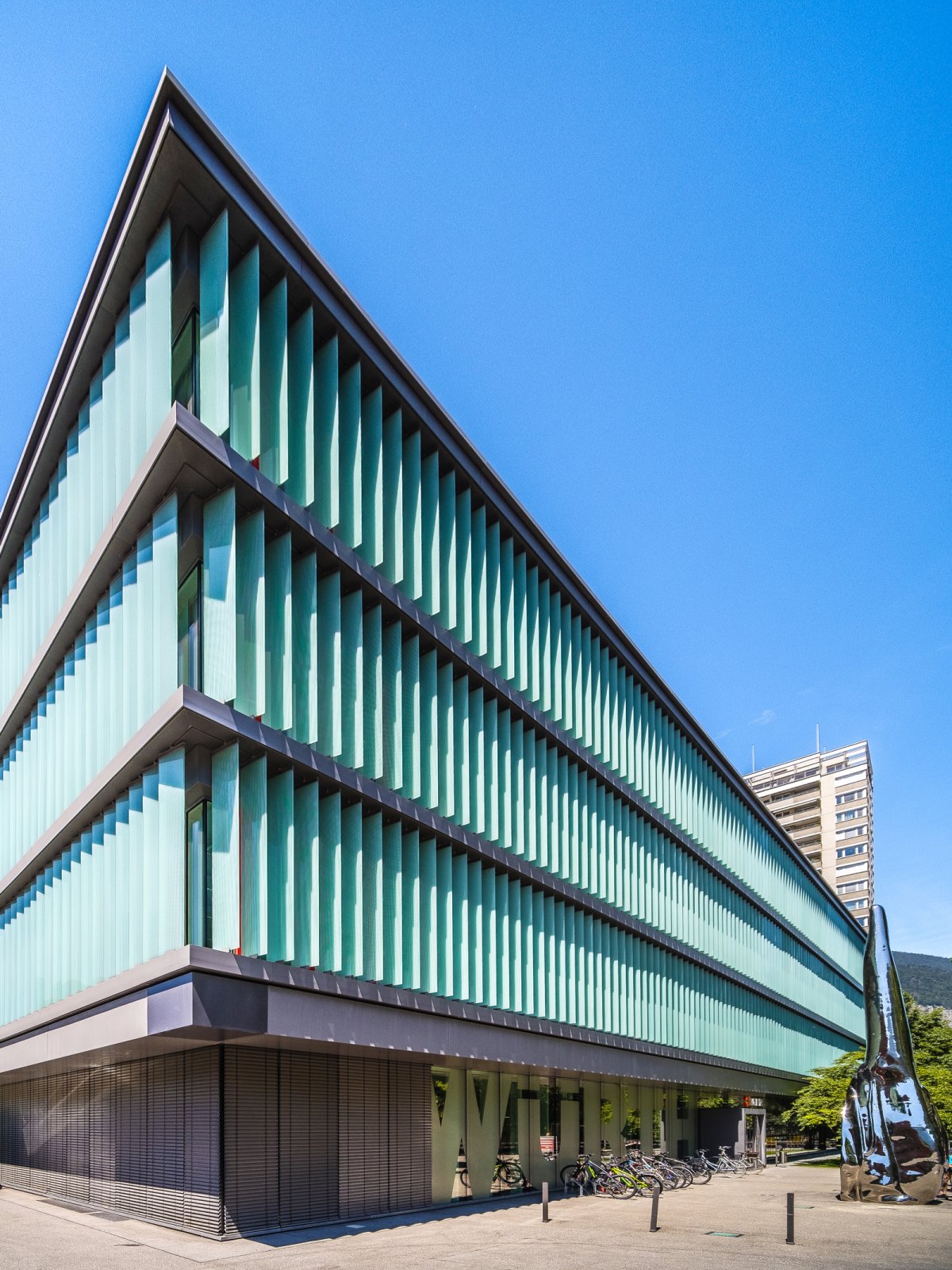
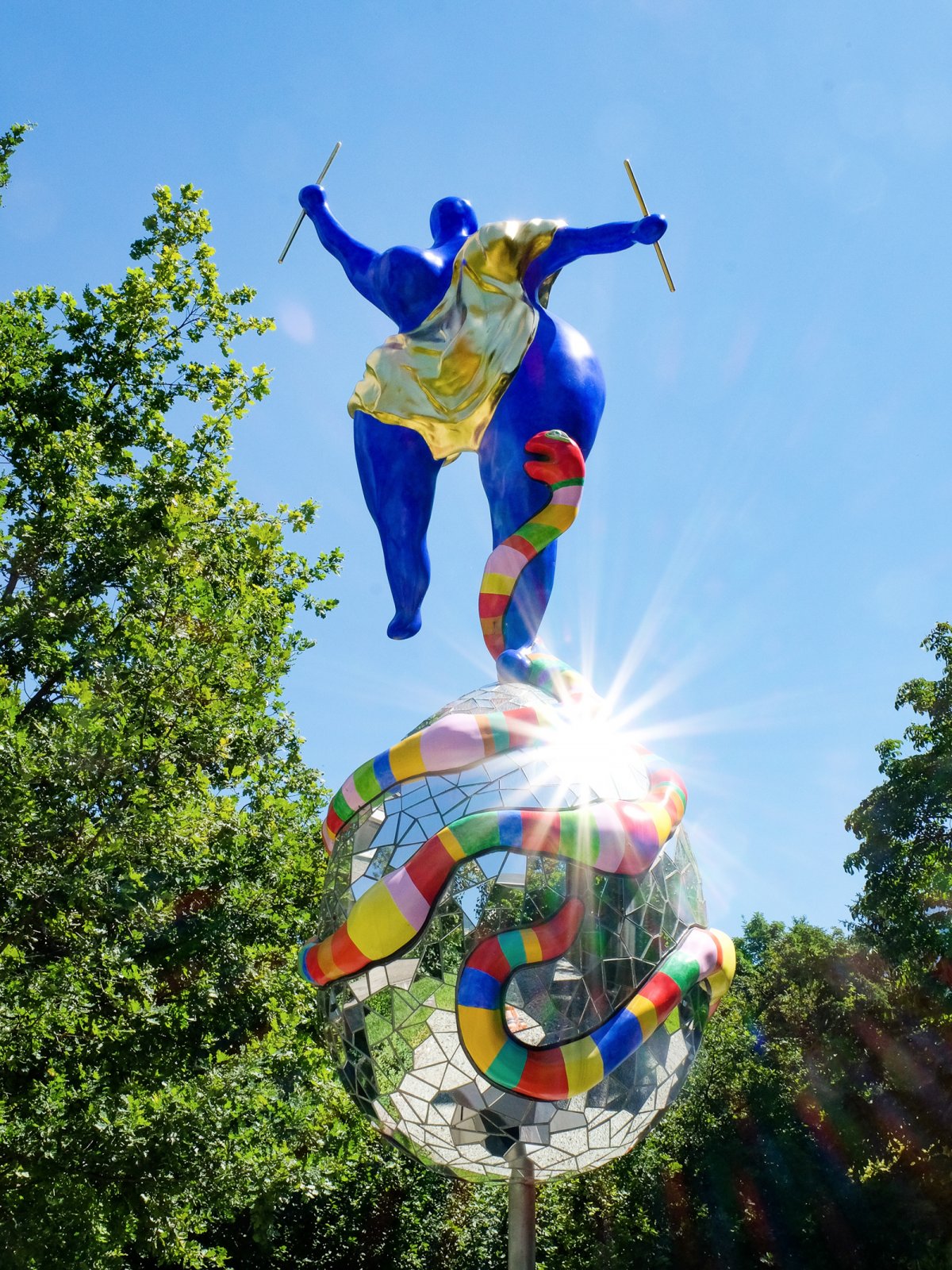
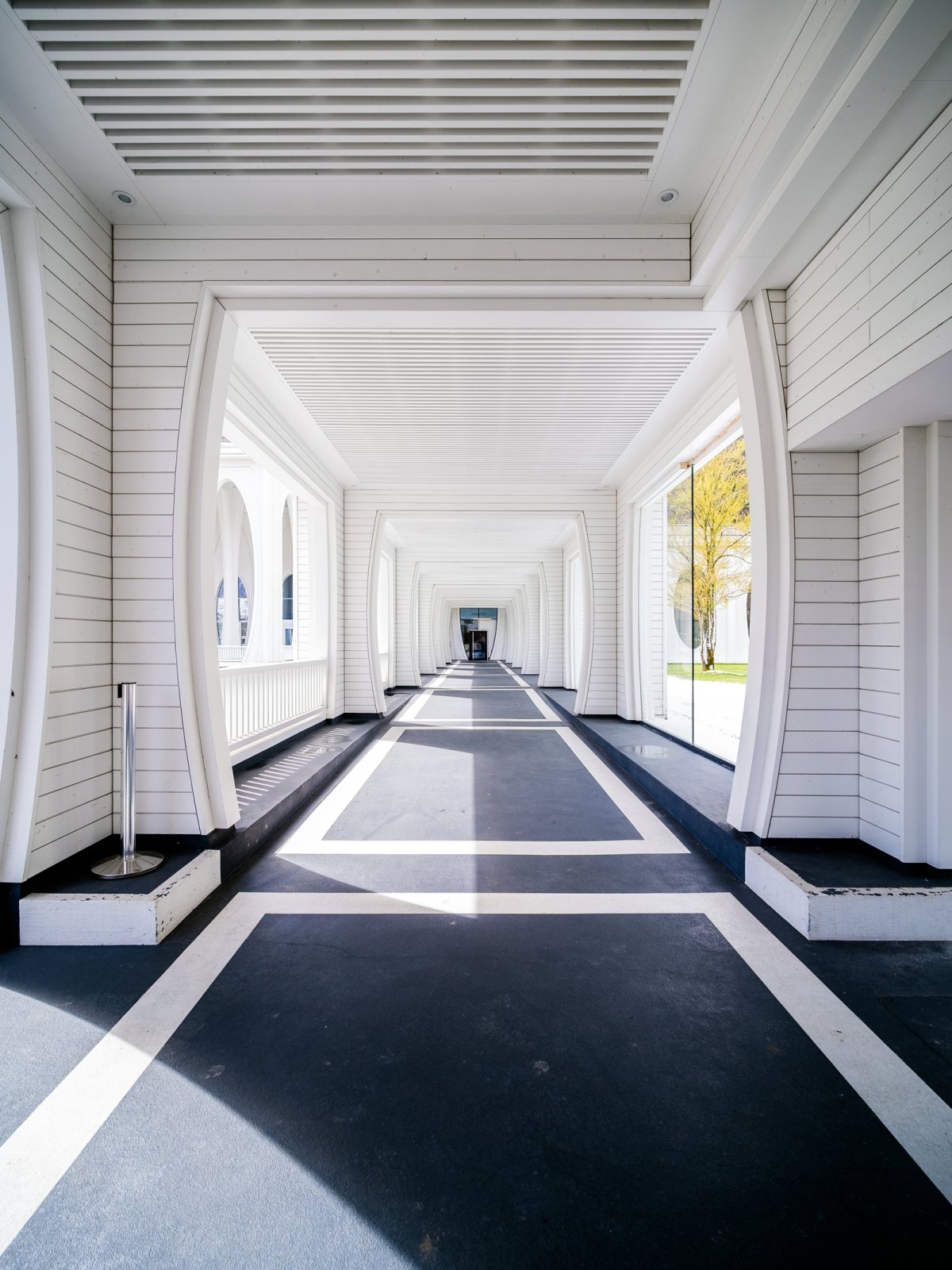
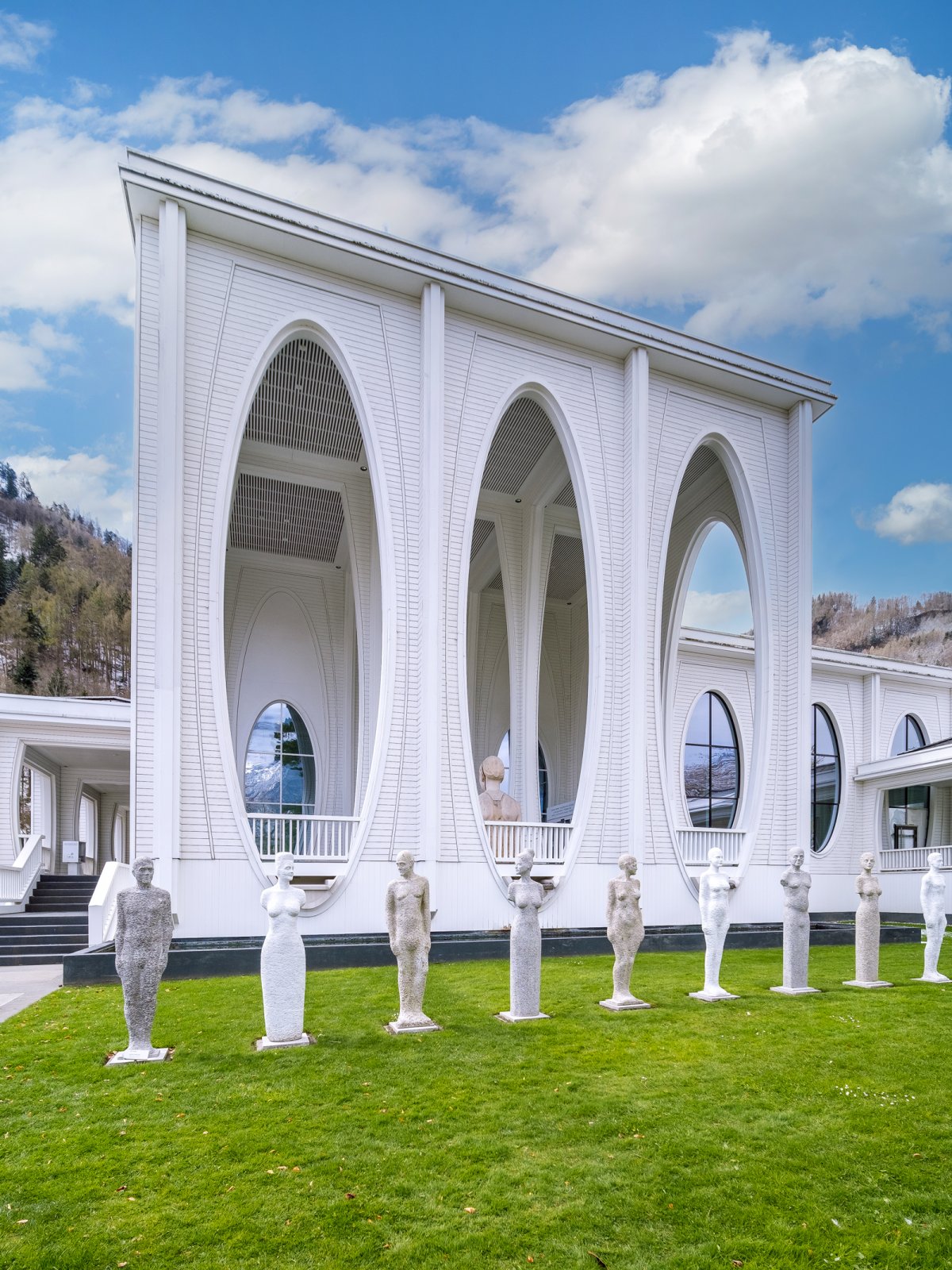
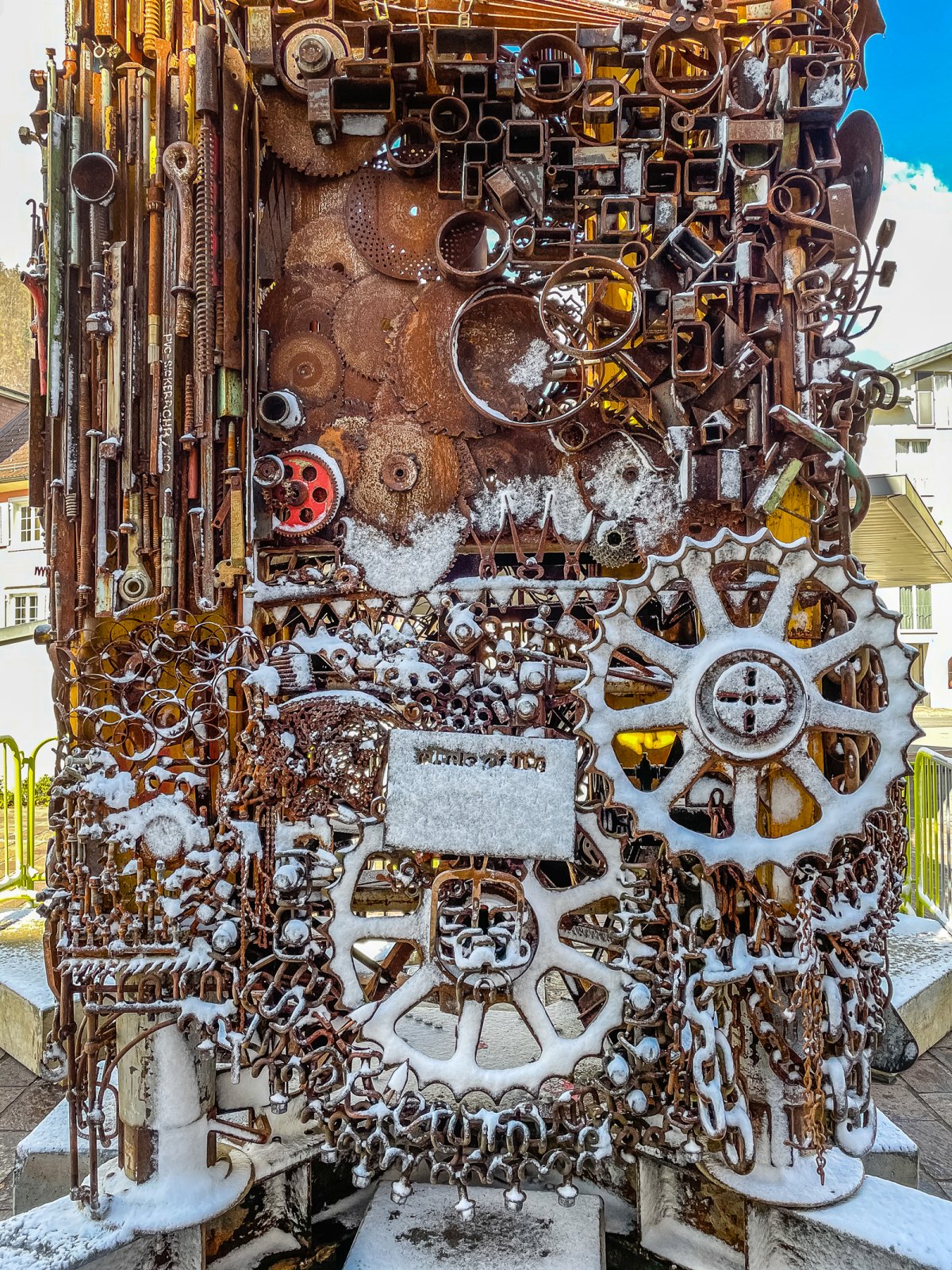
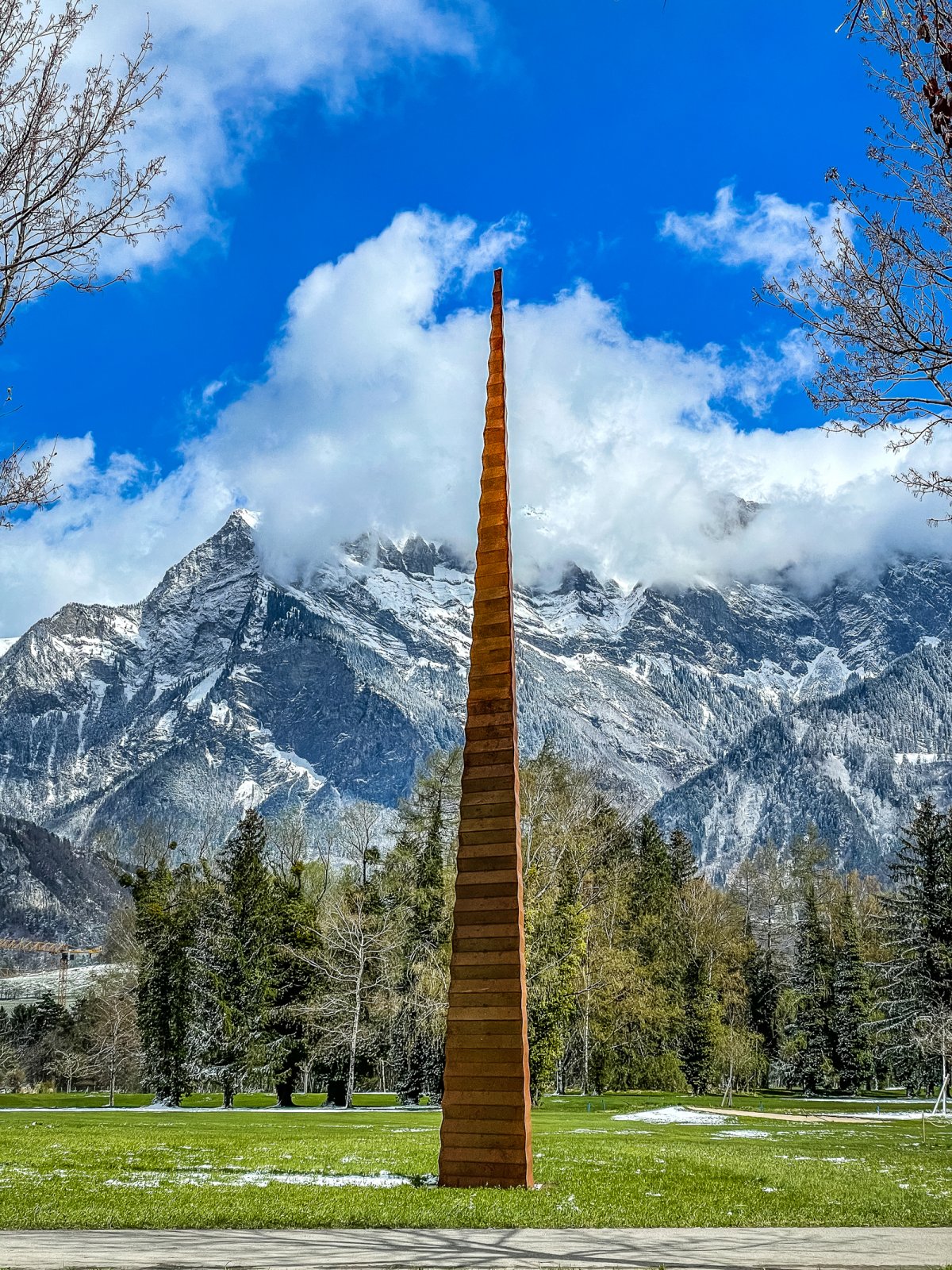
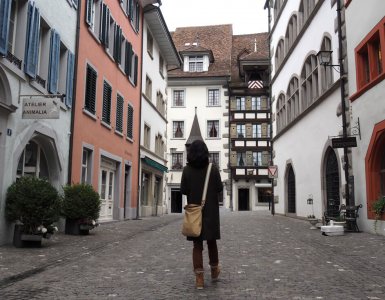
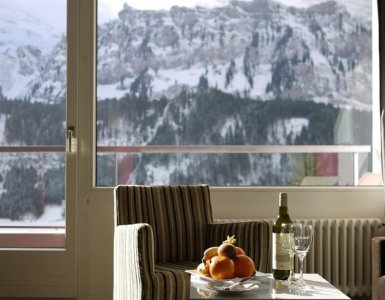
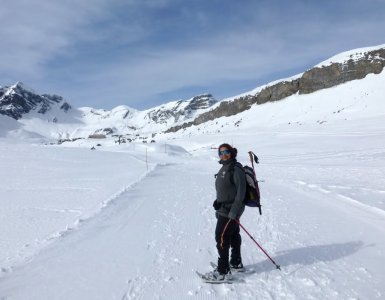

Add comment